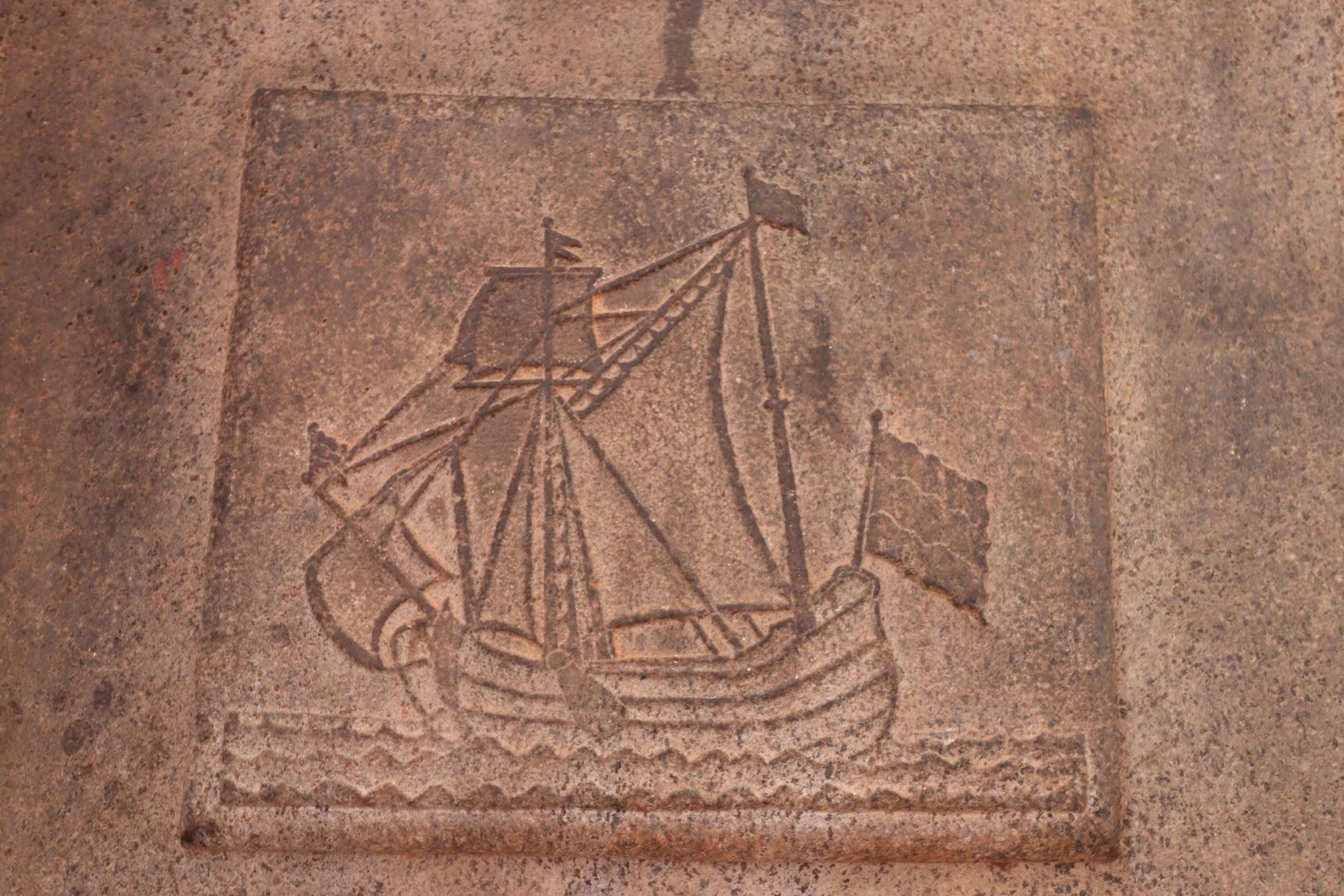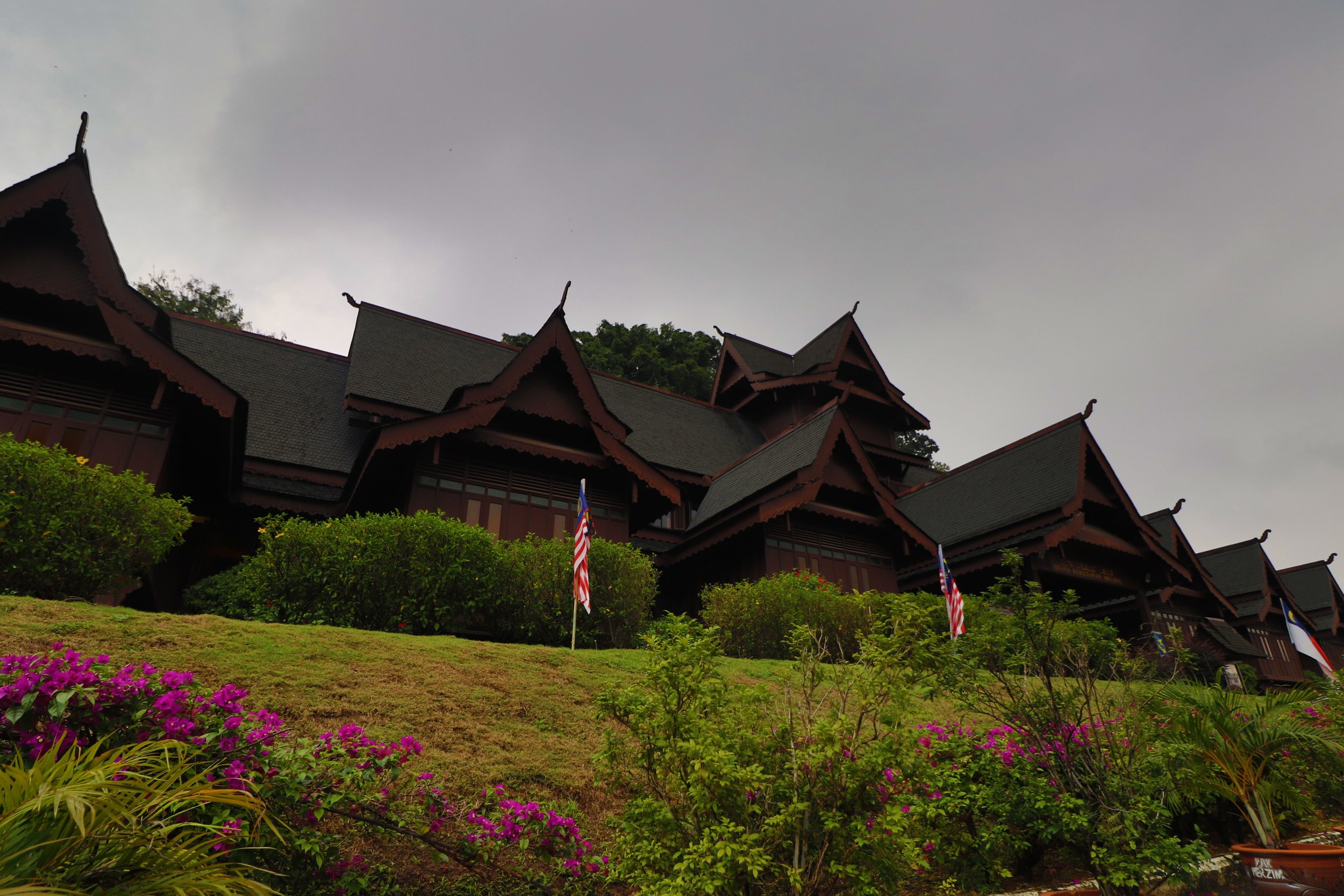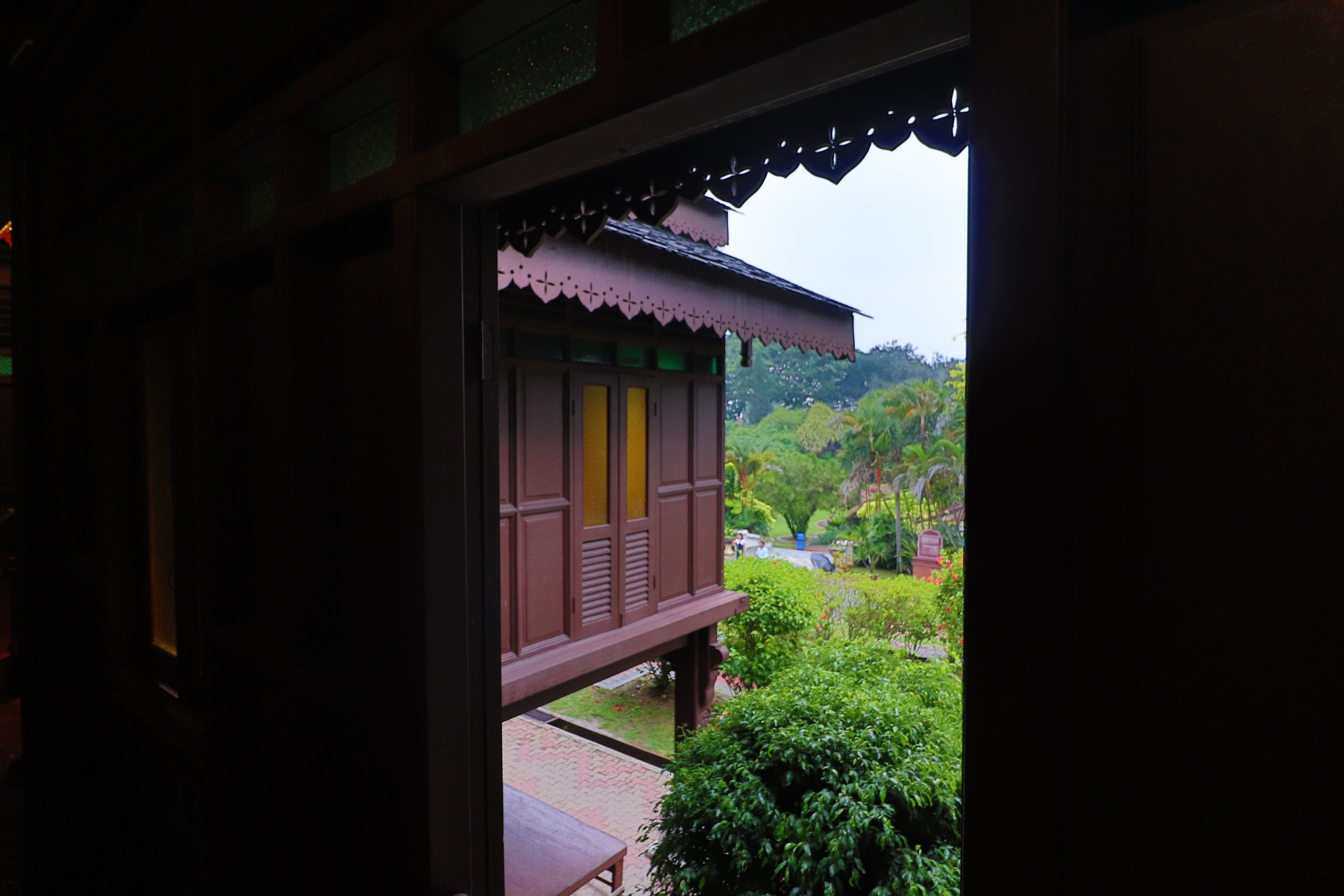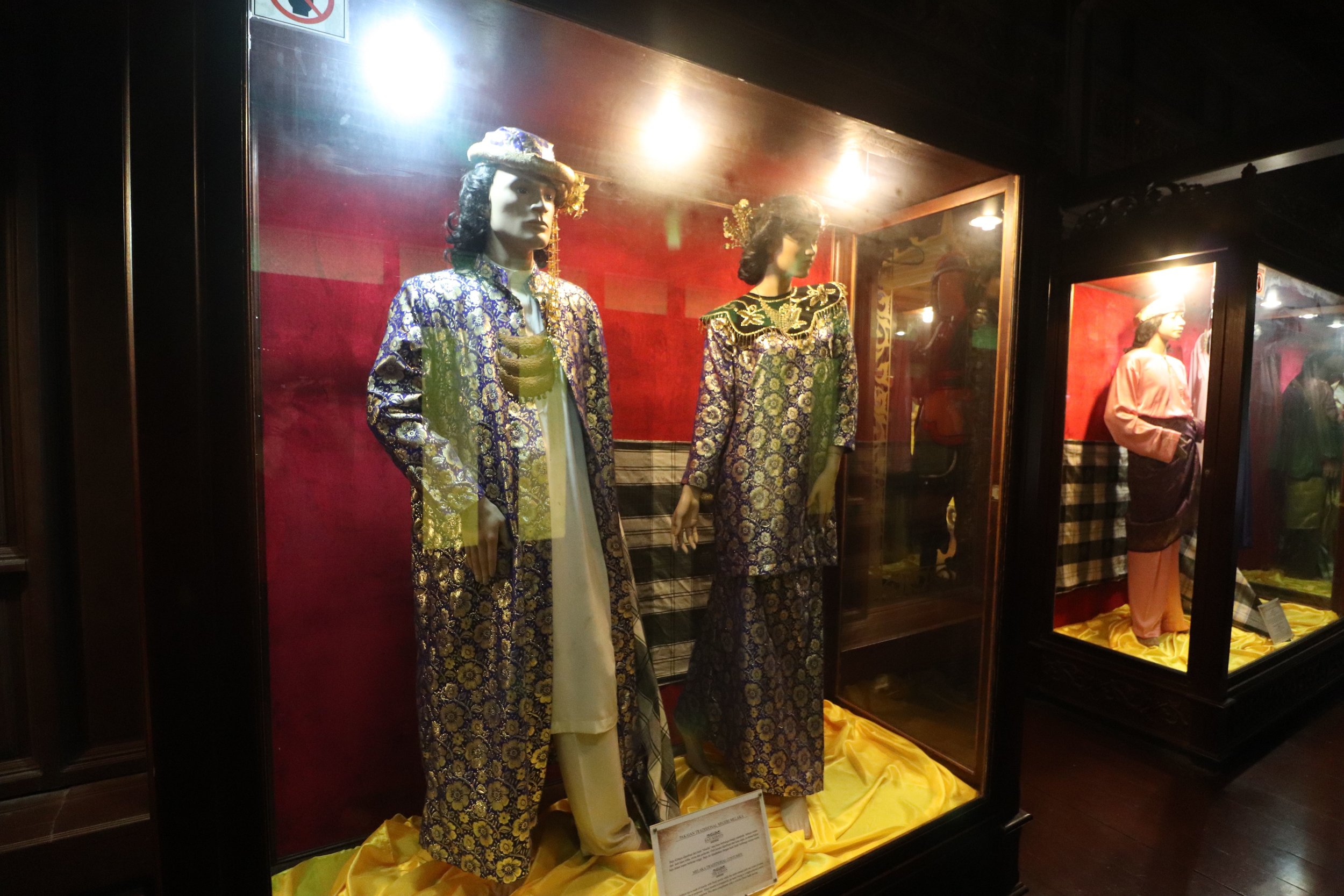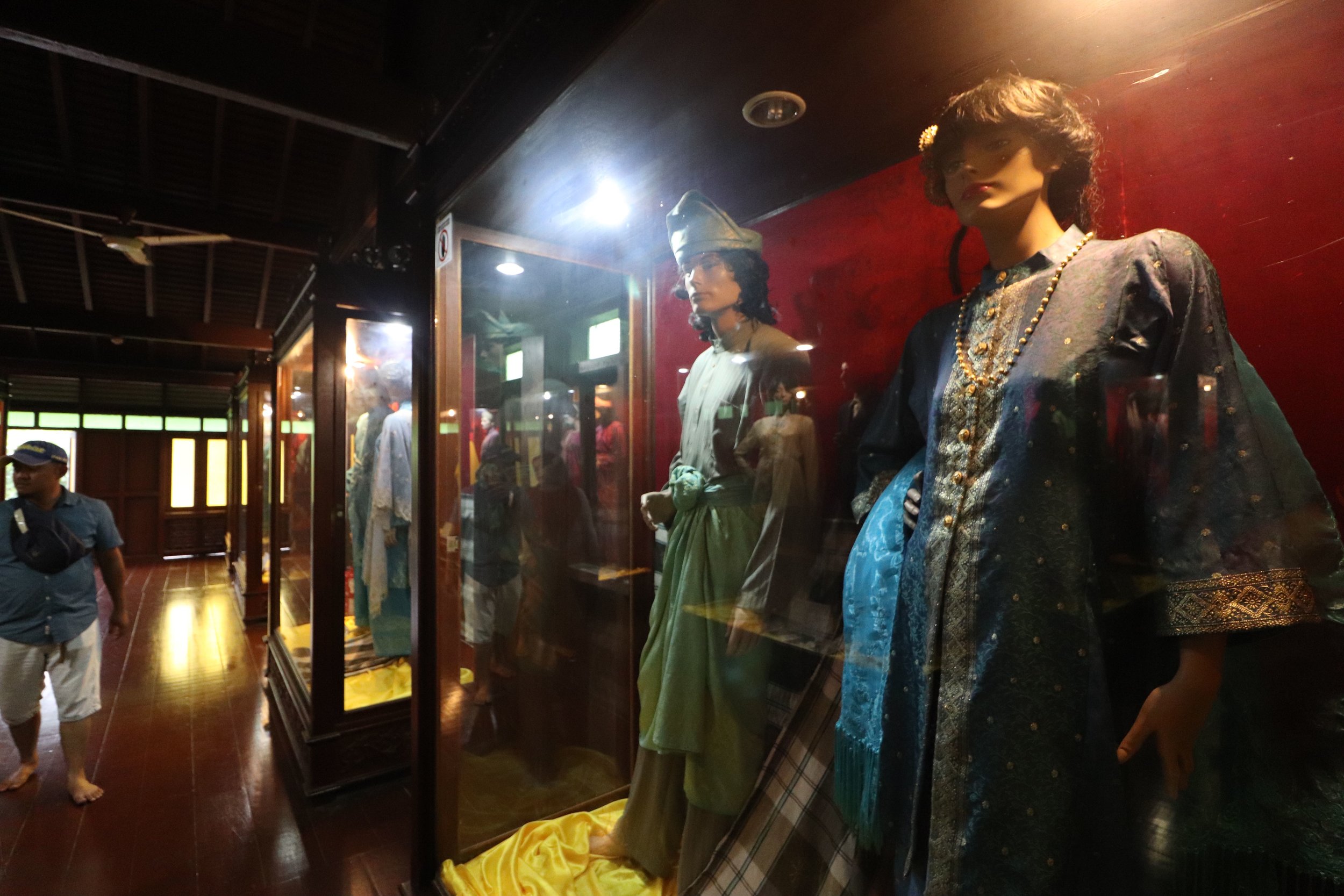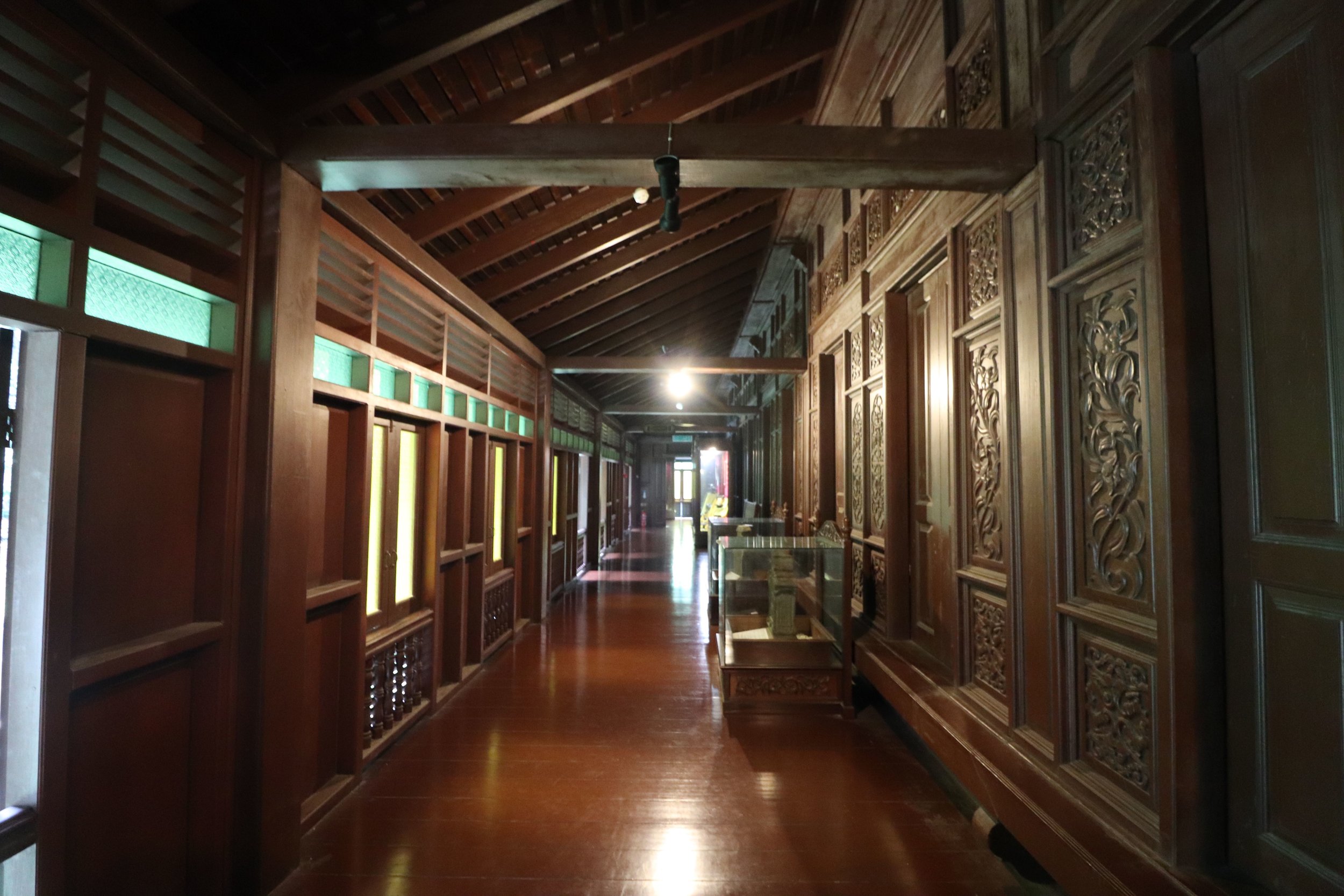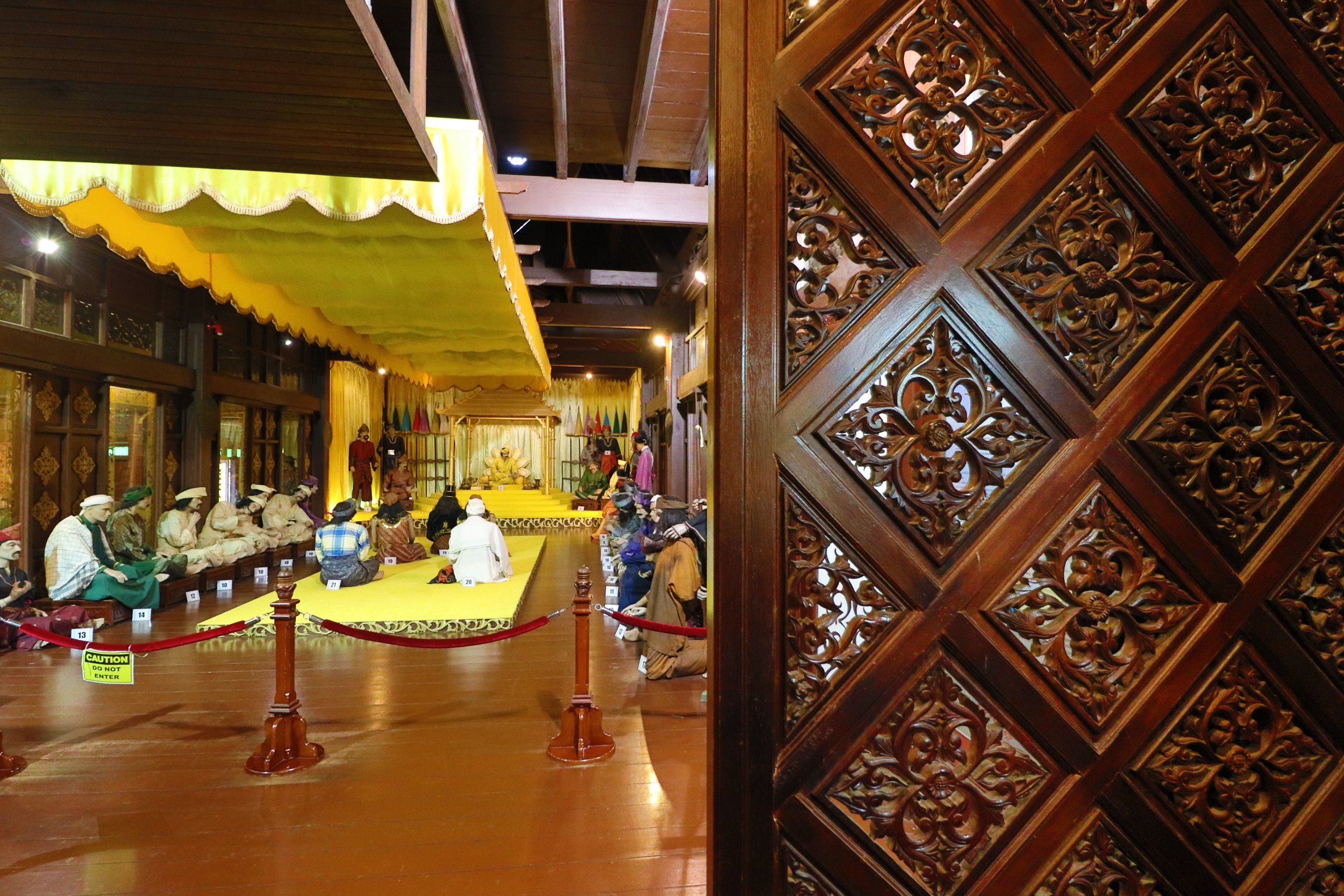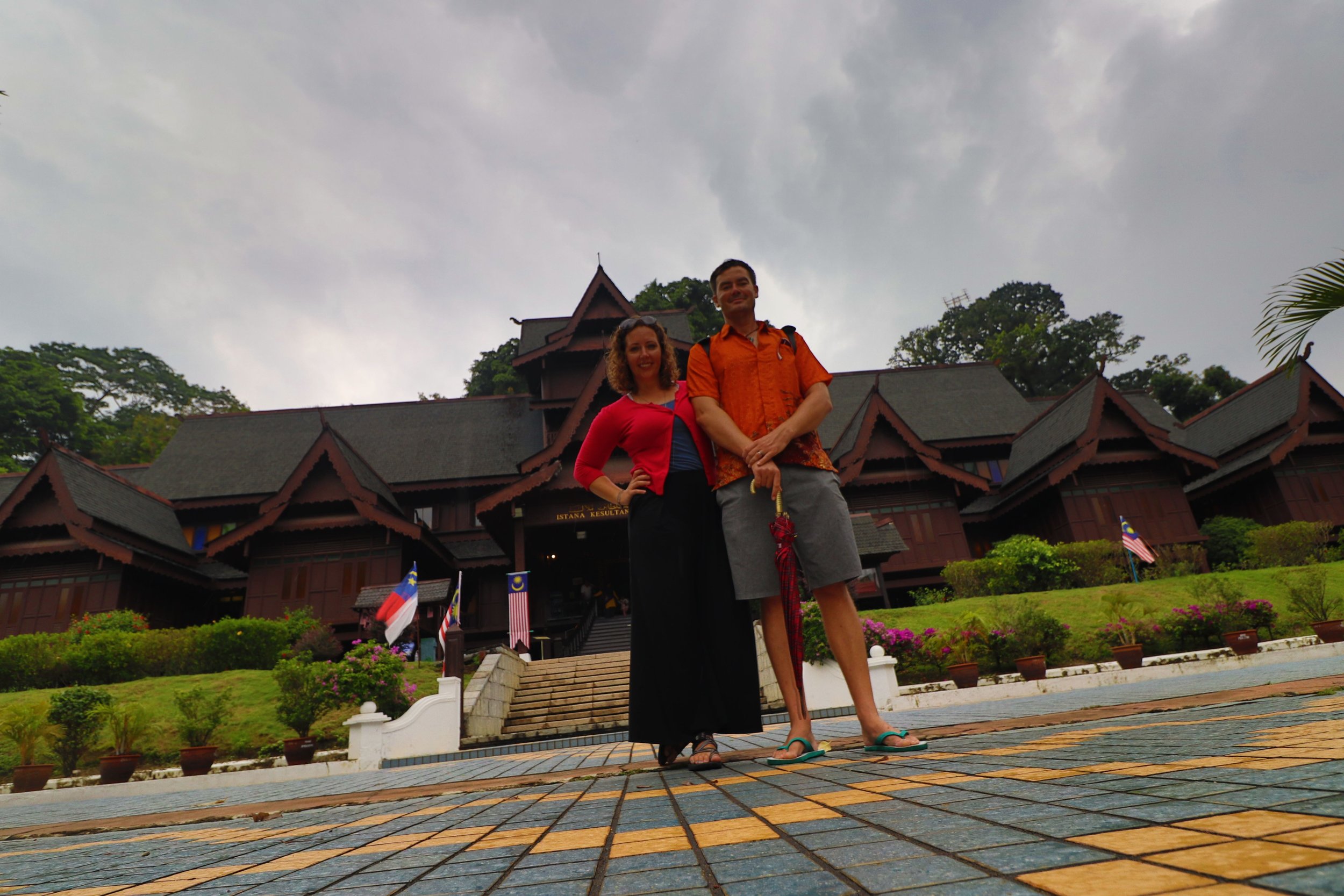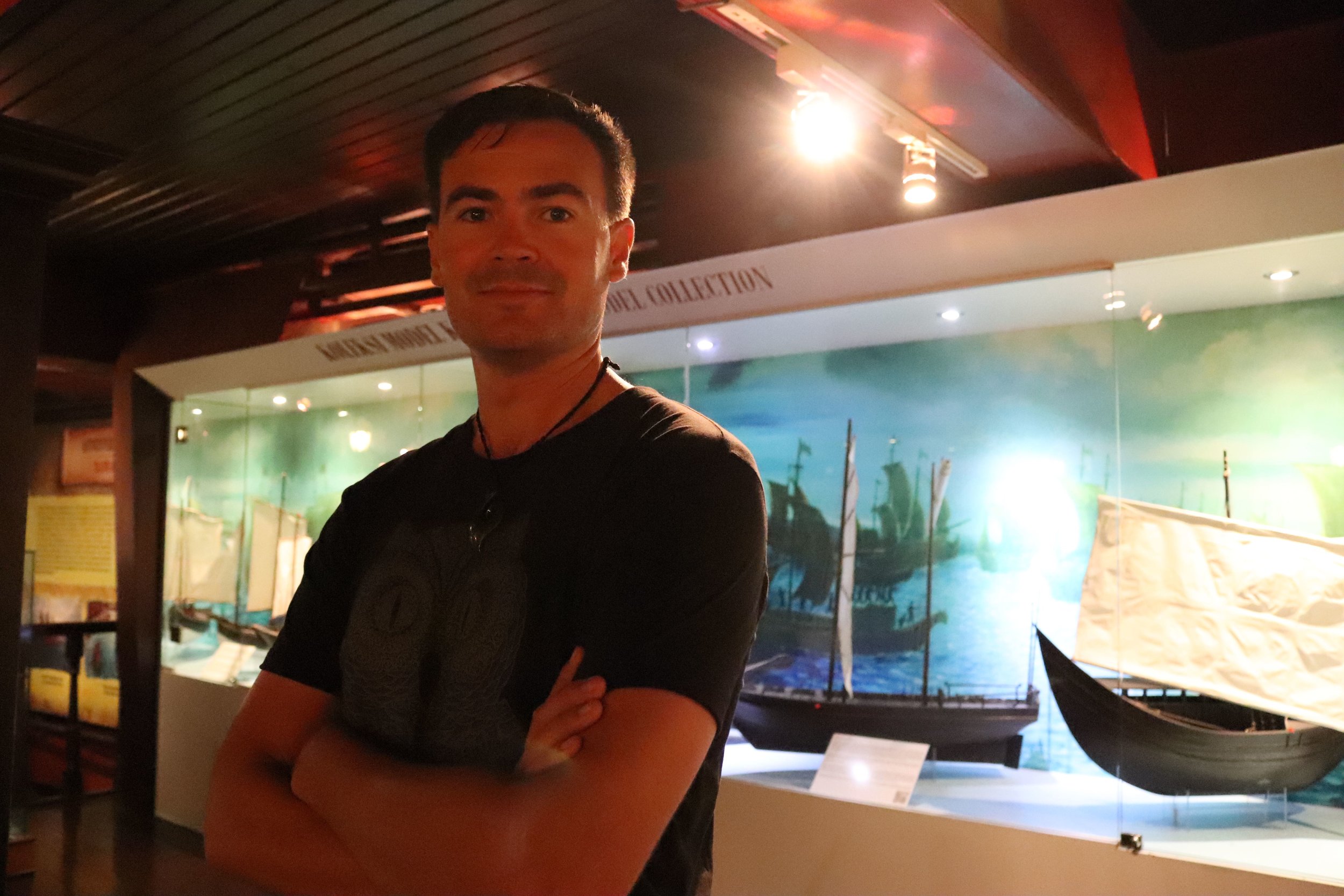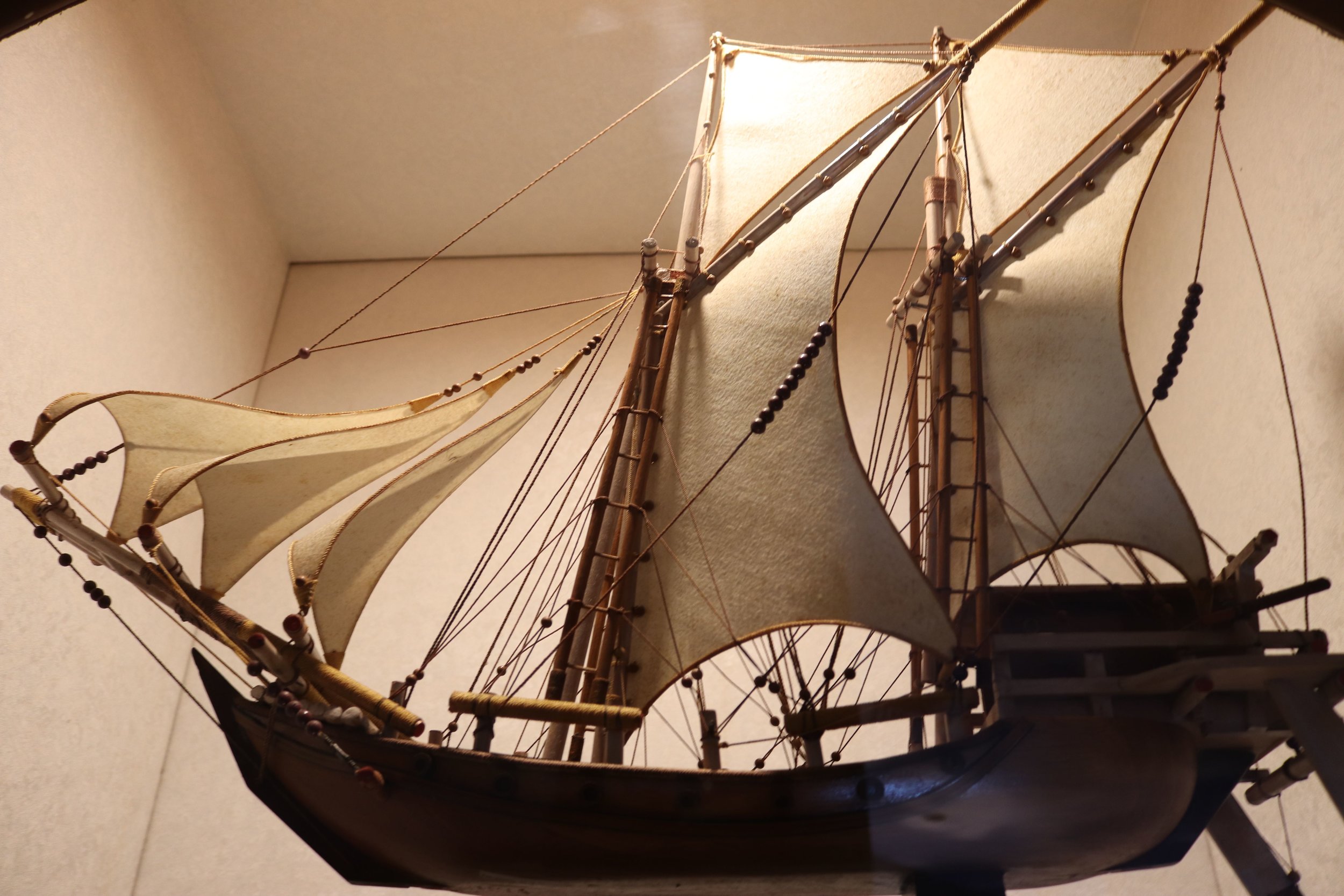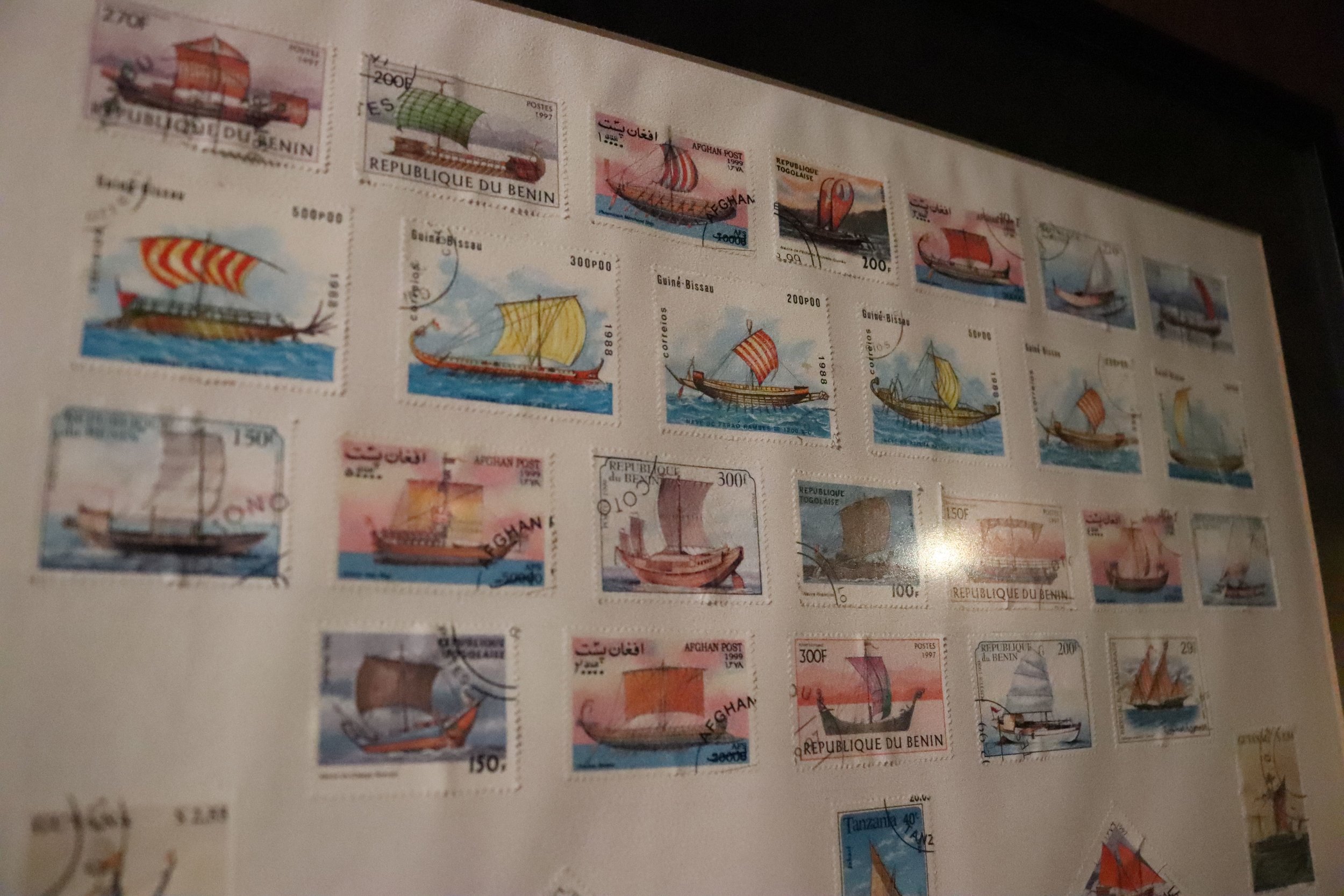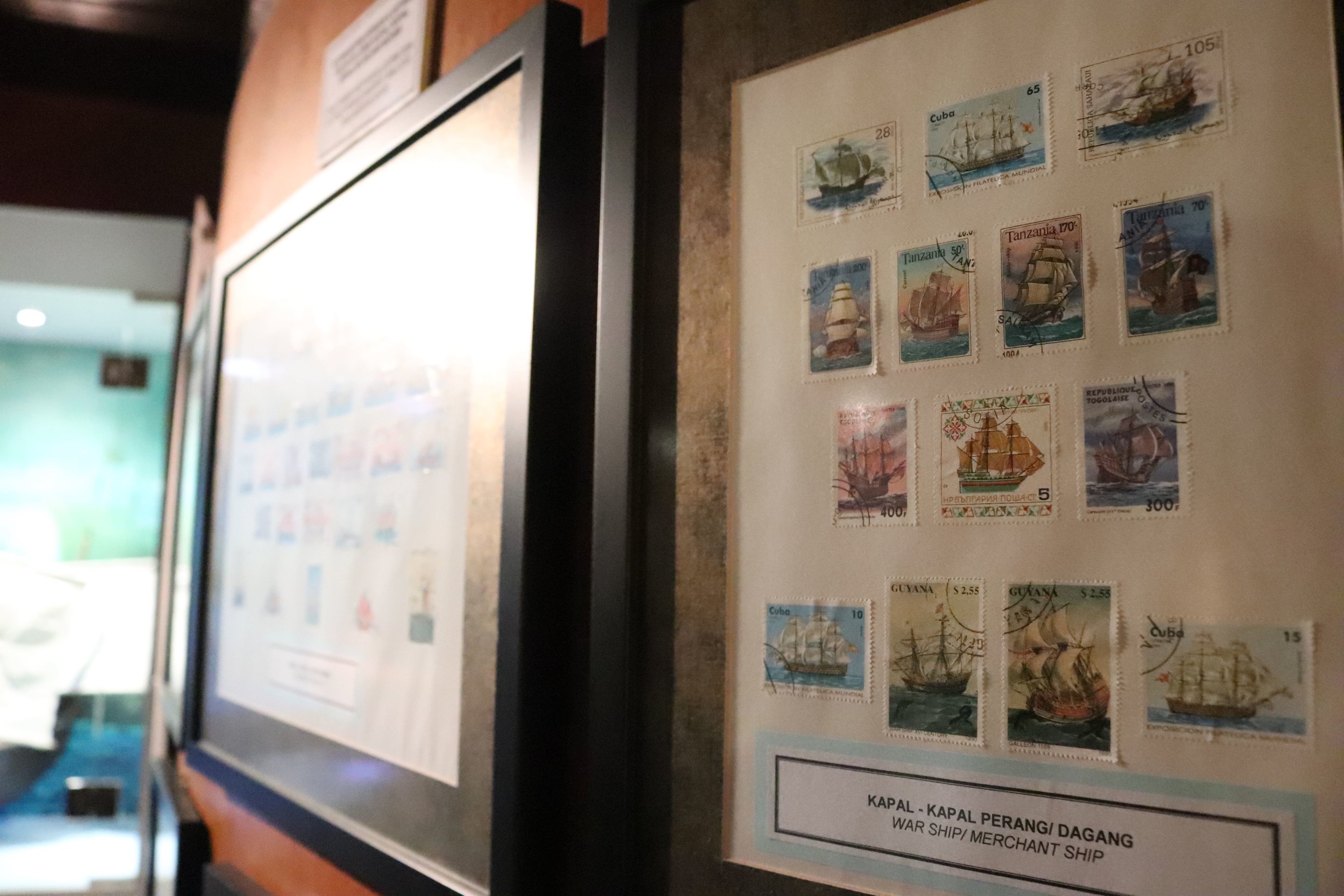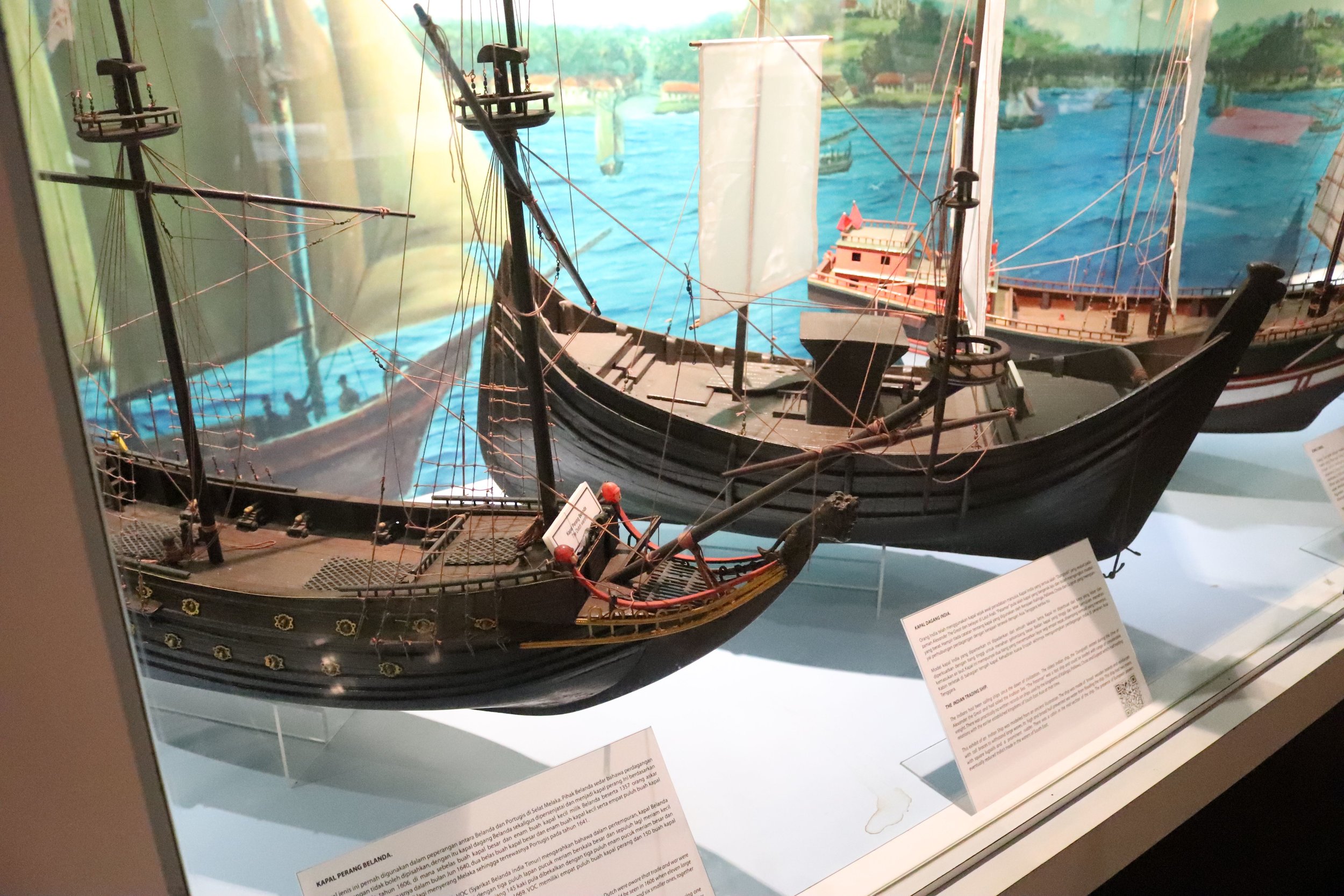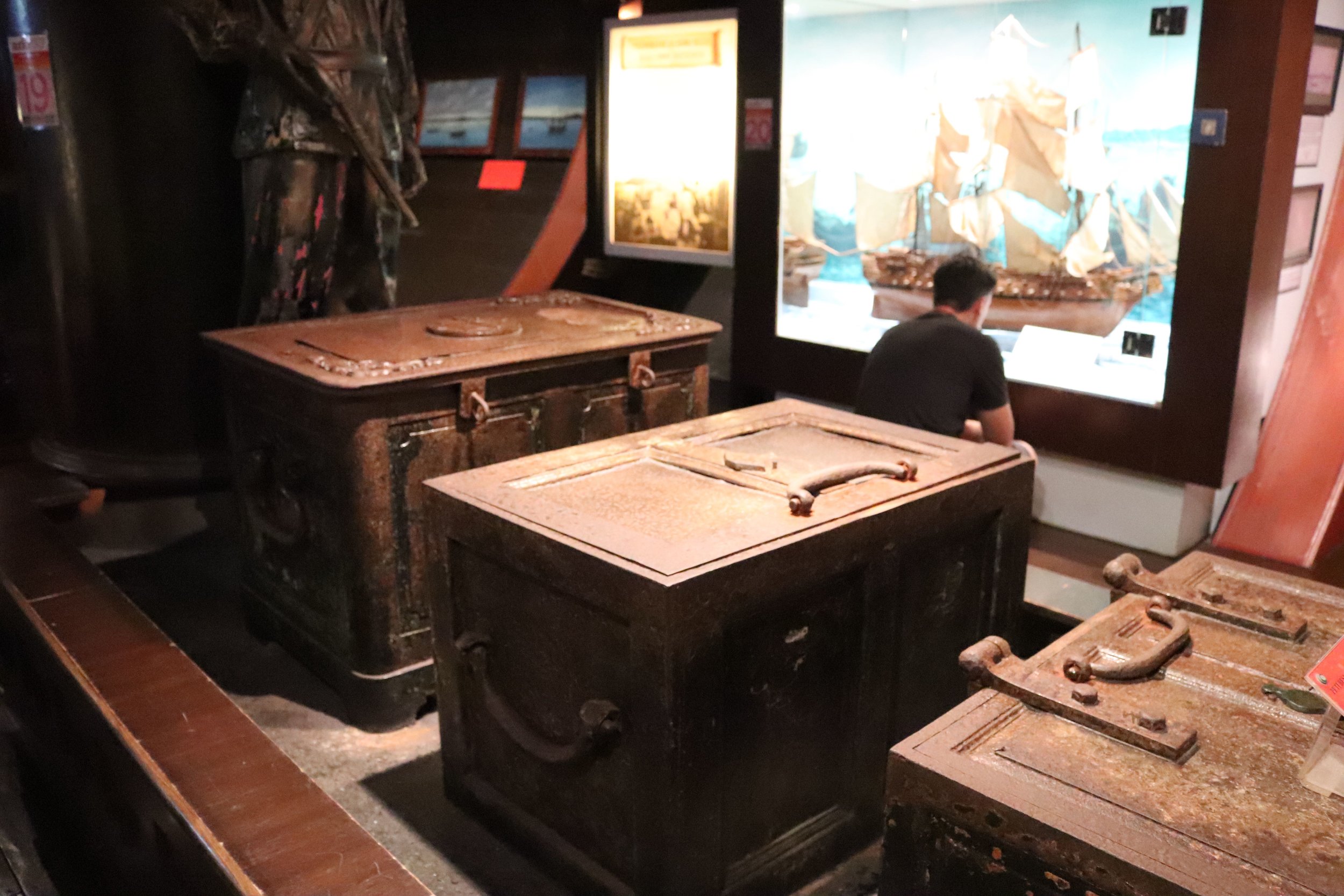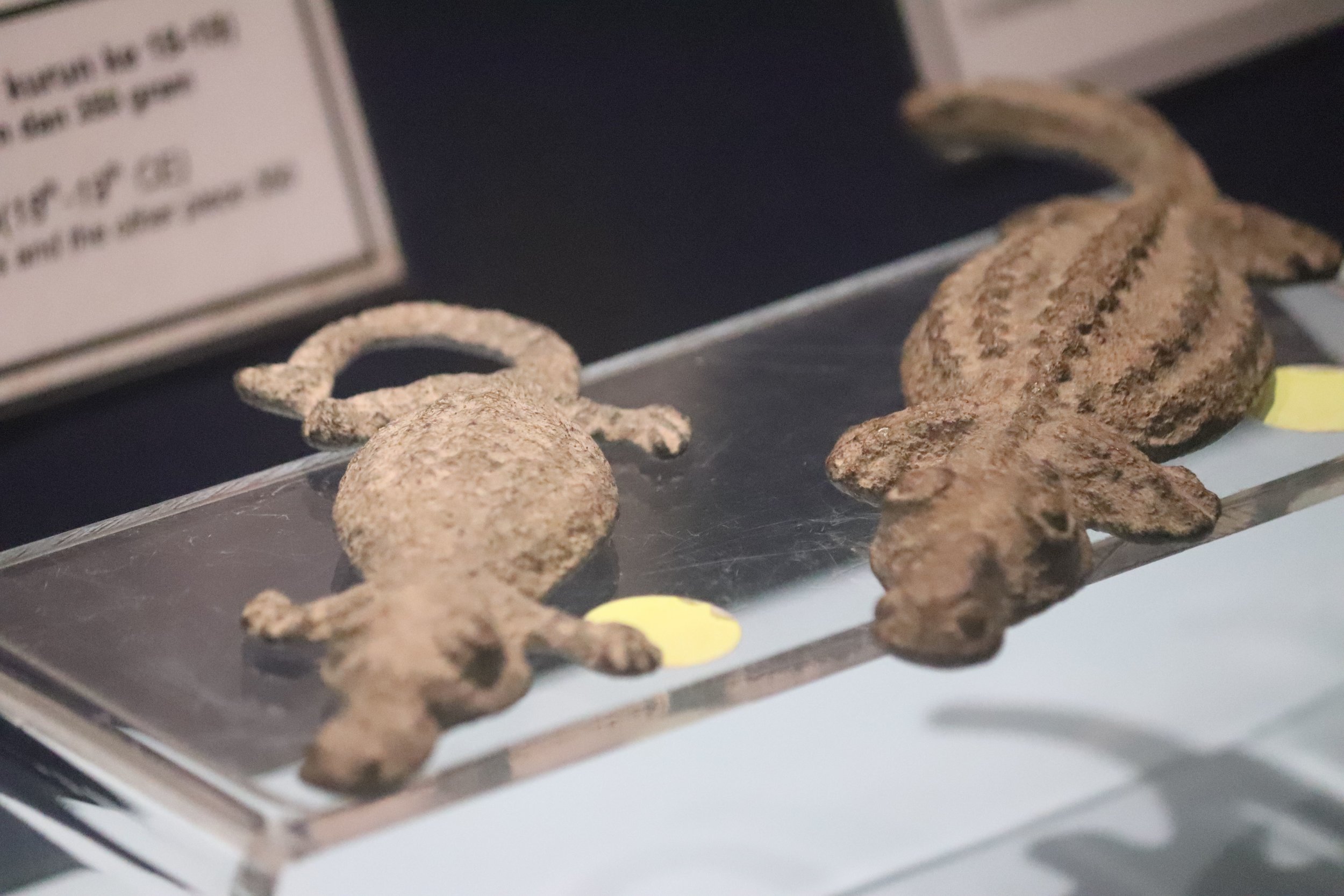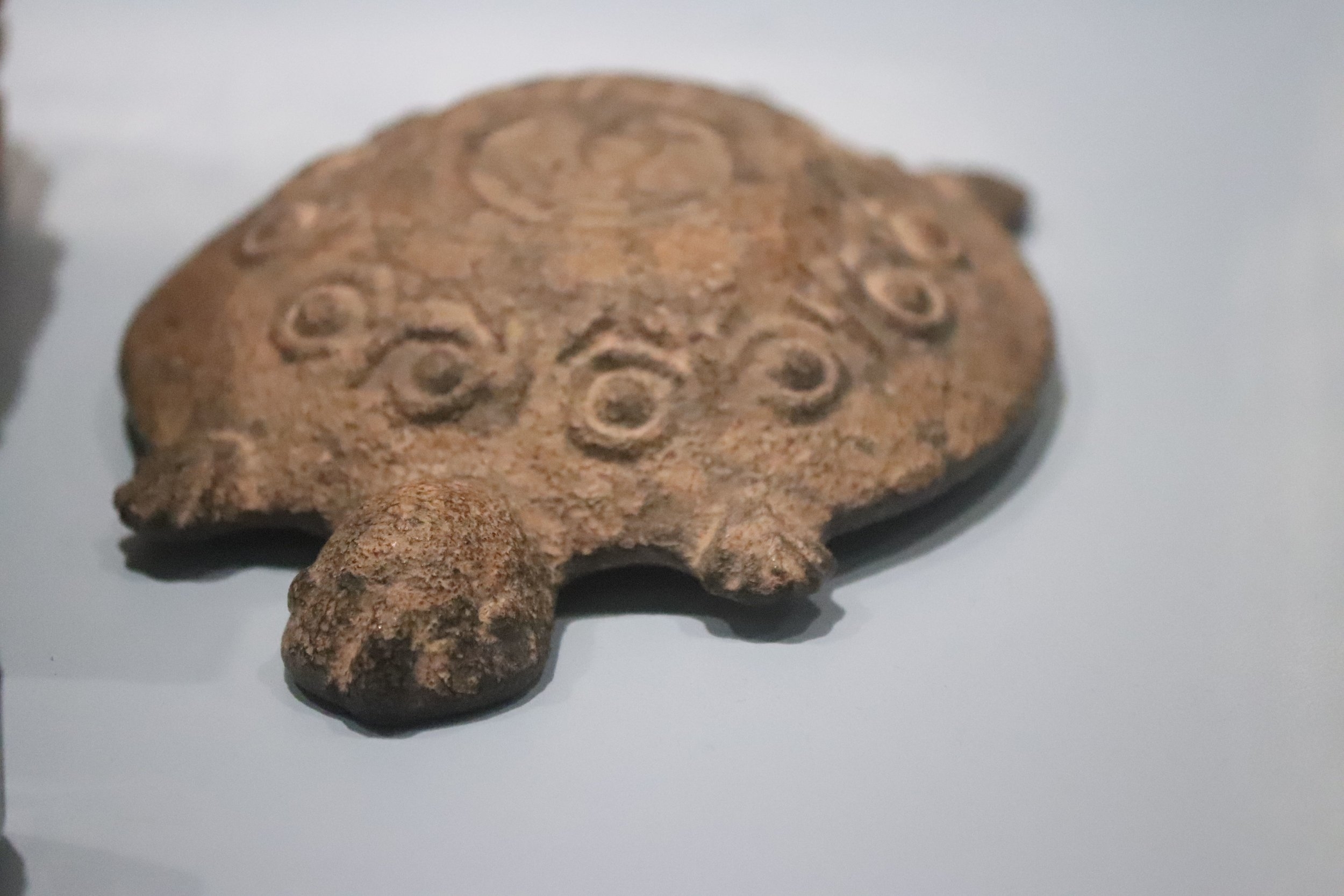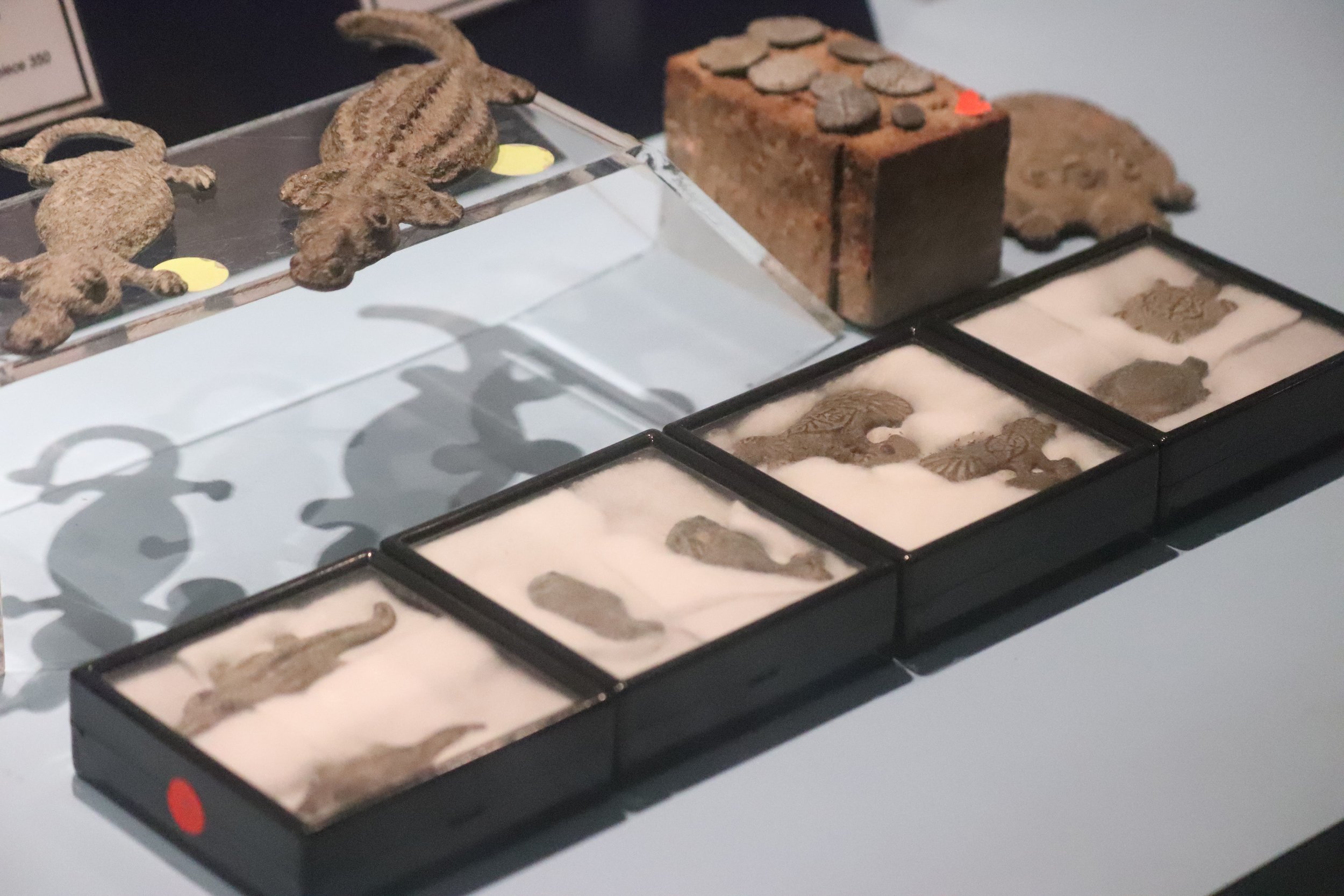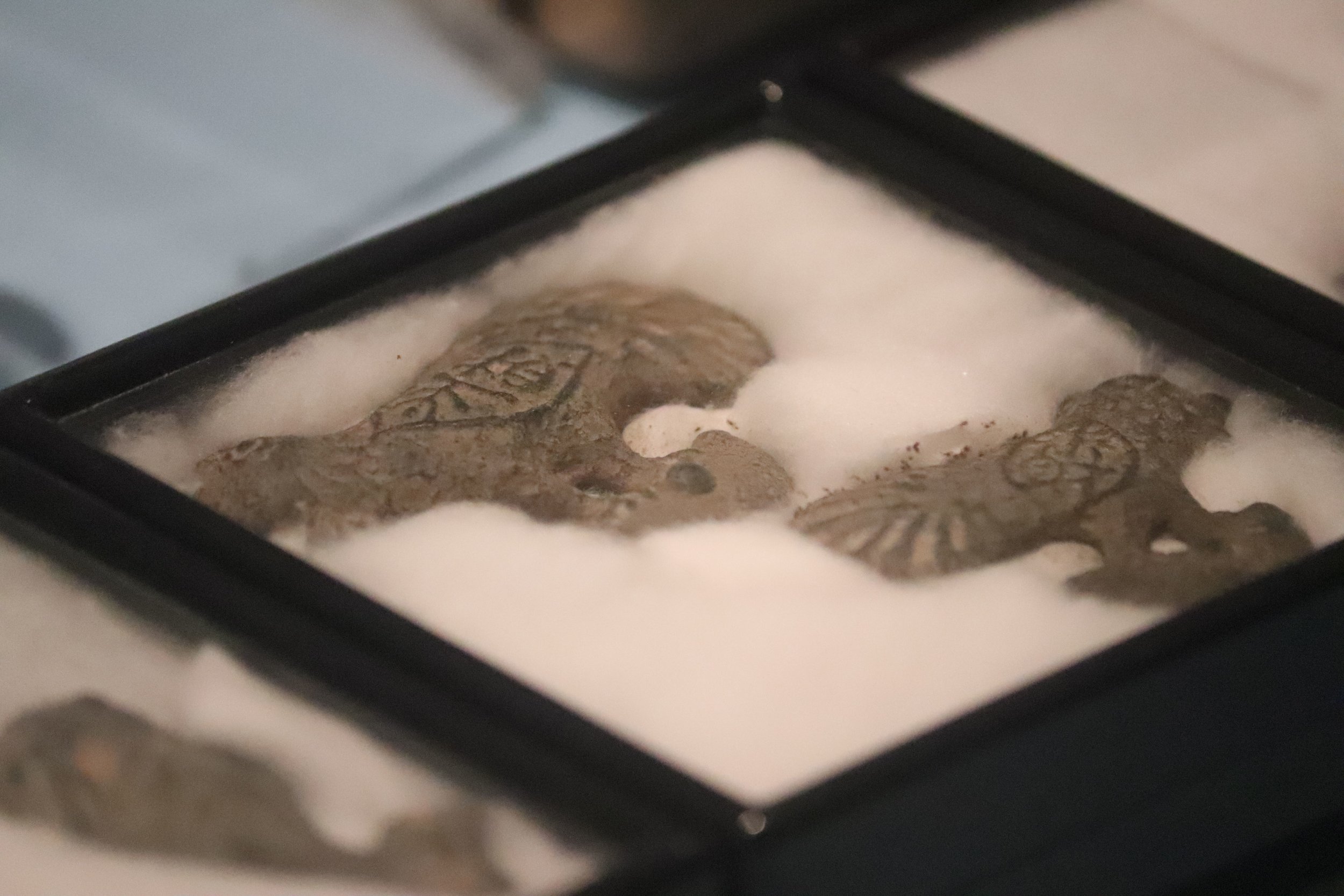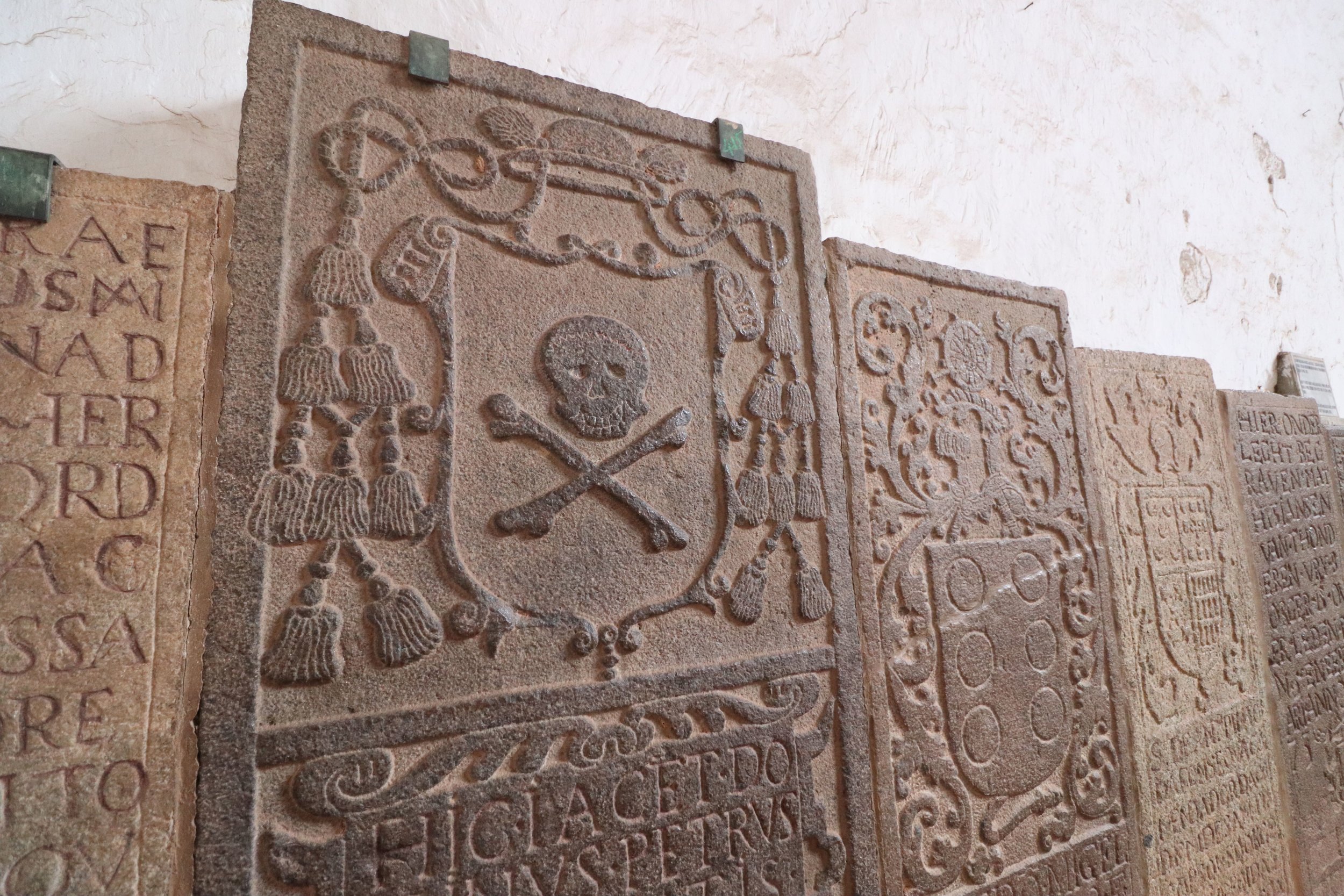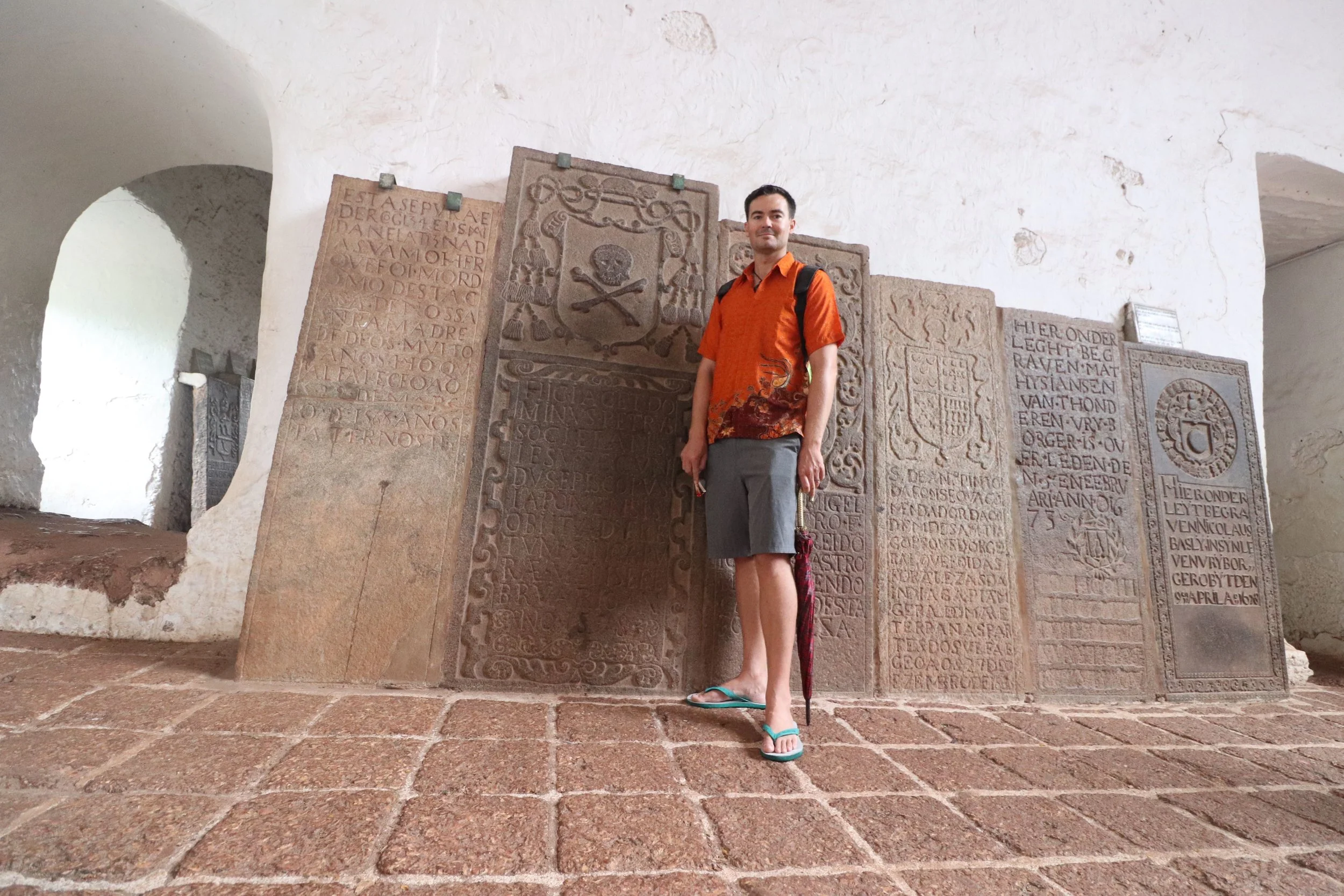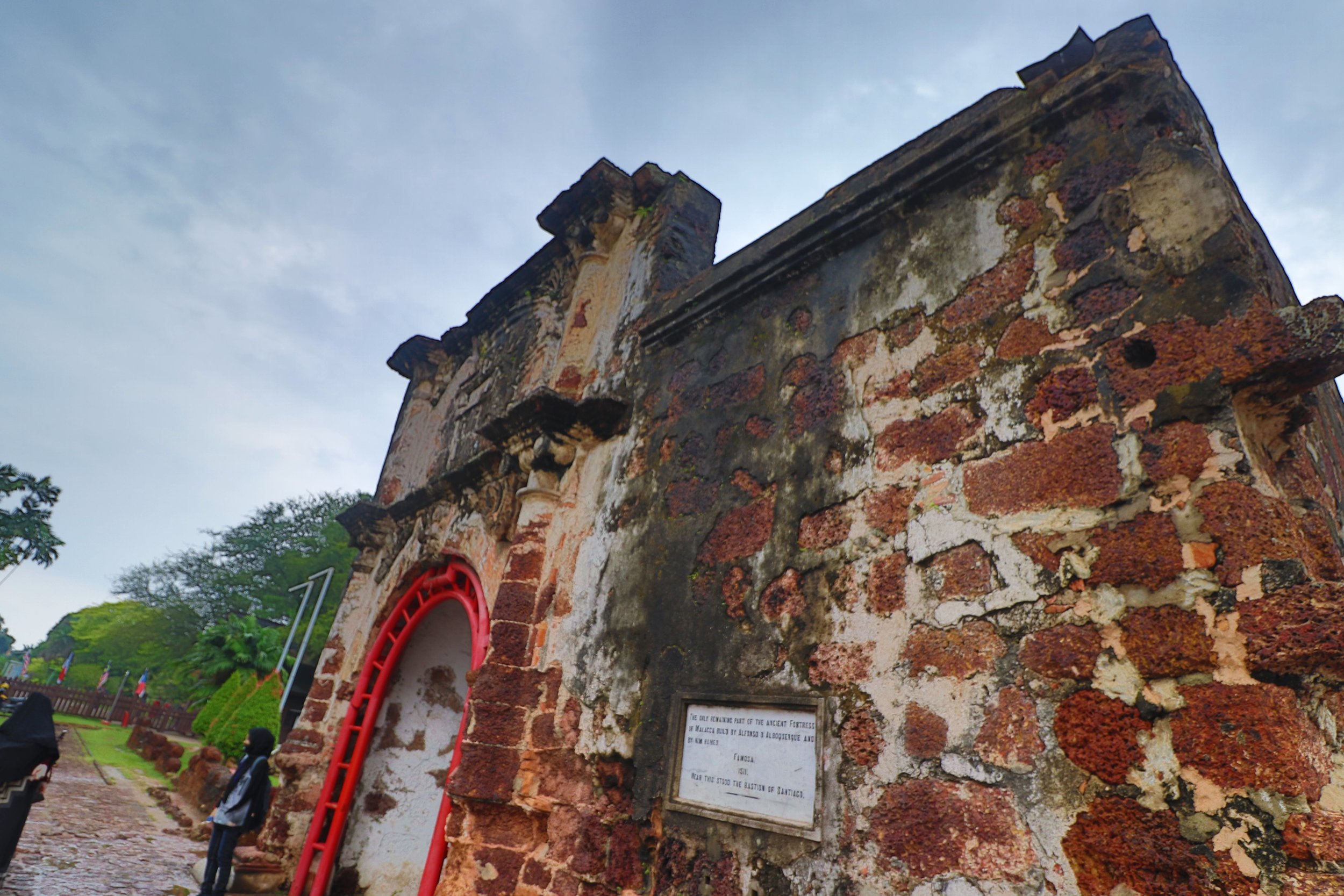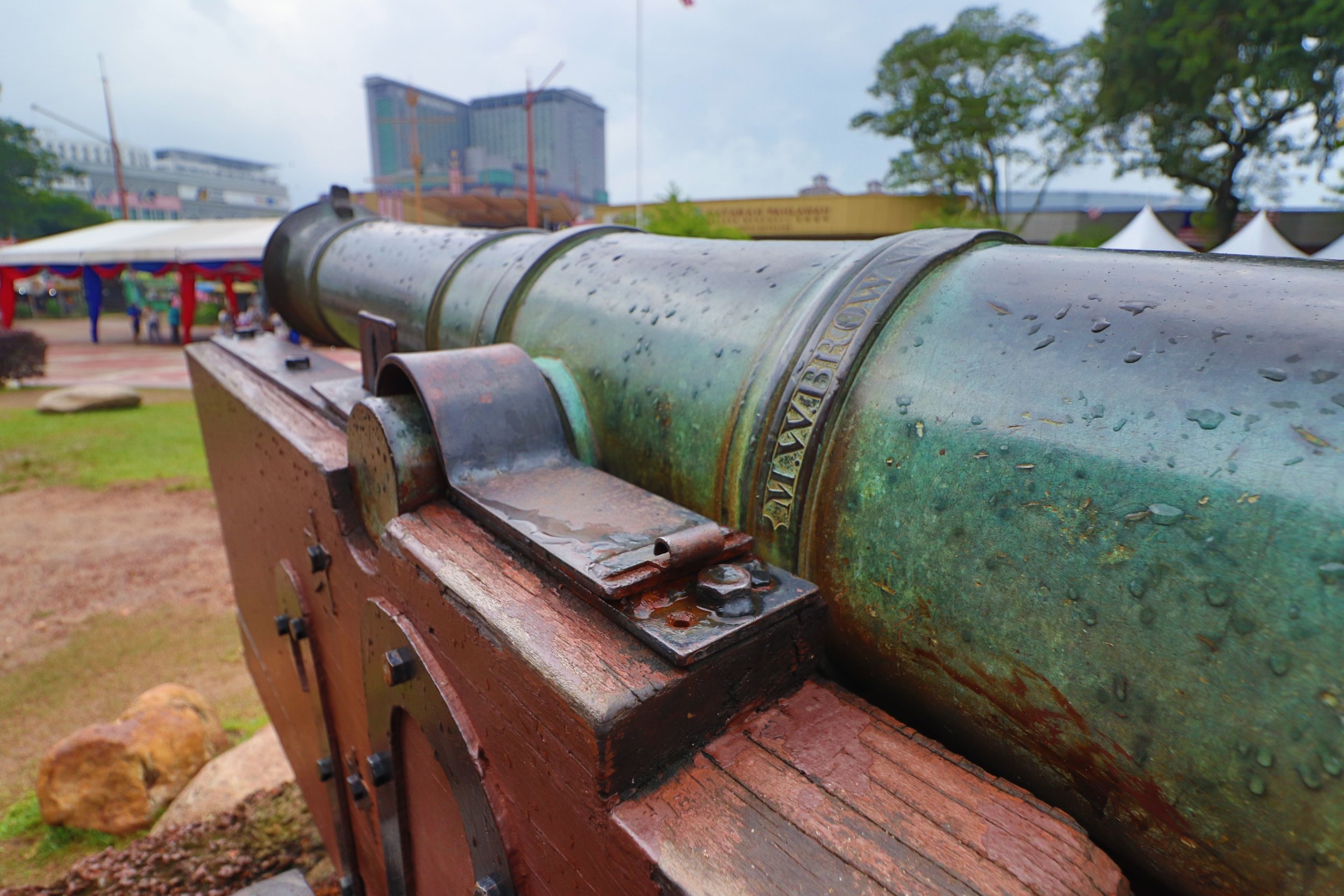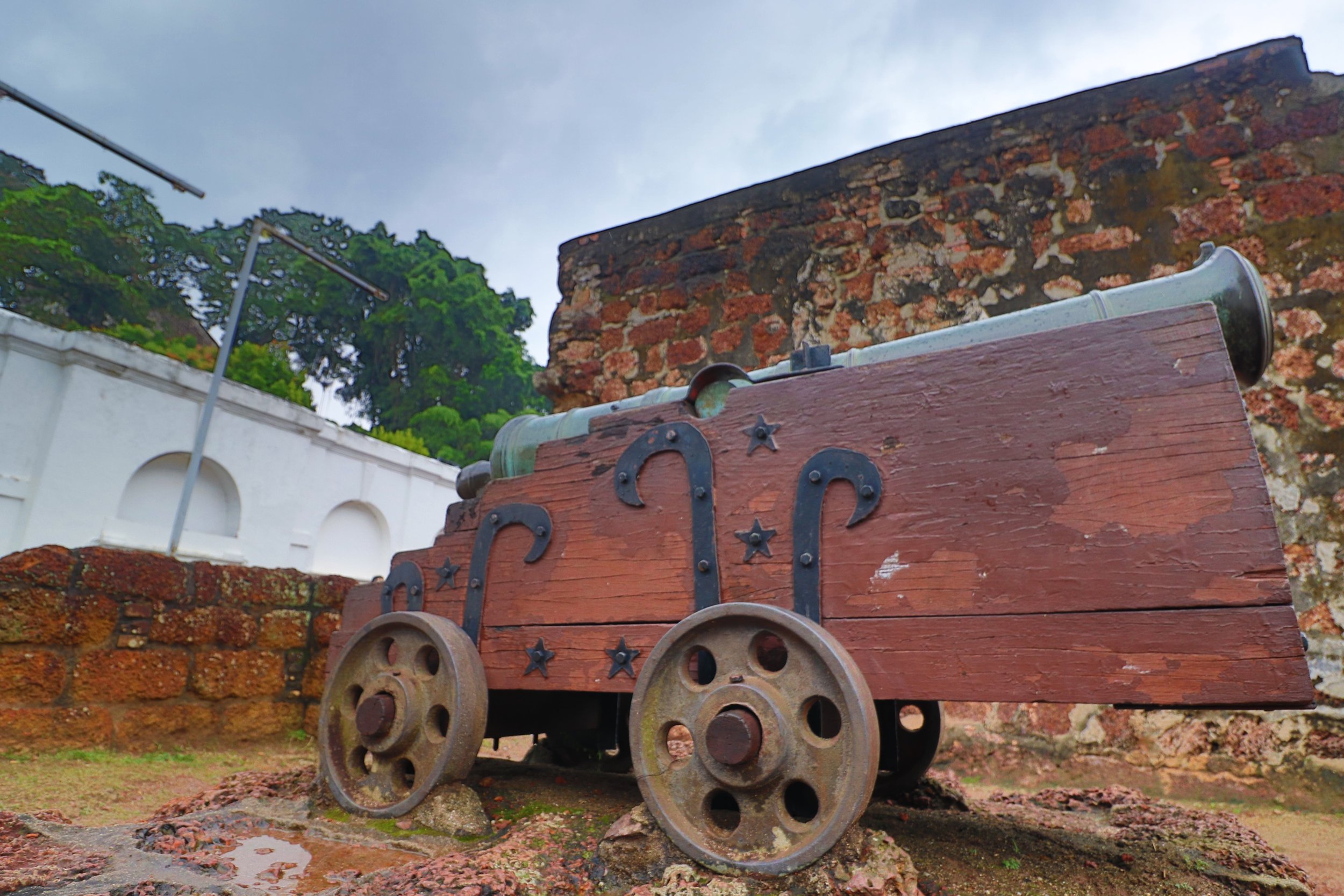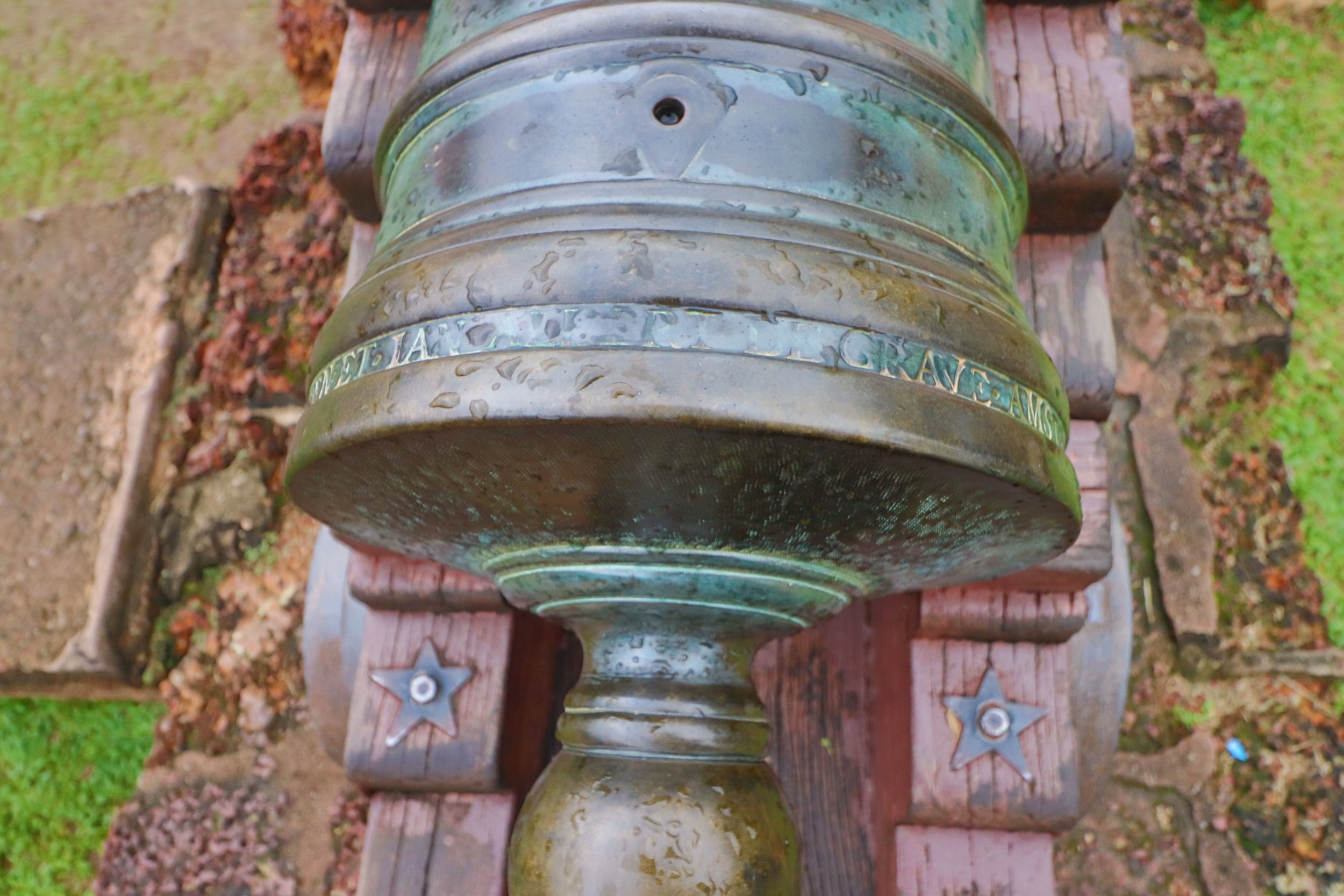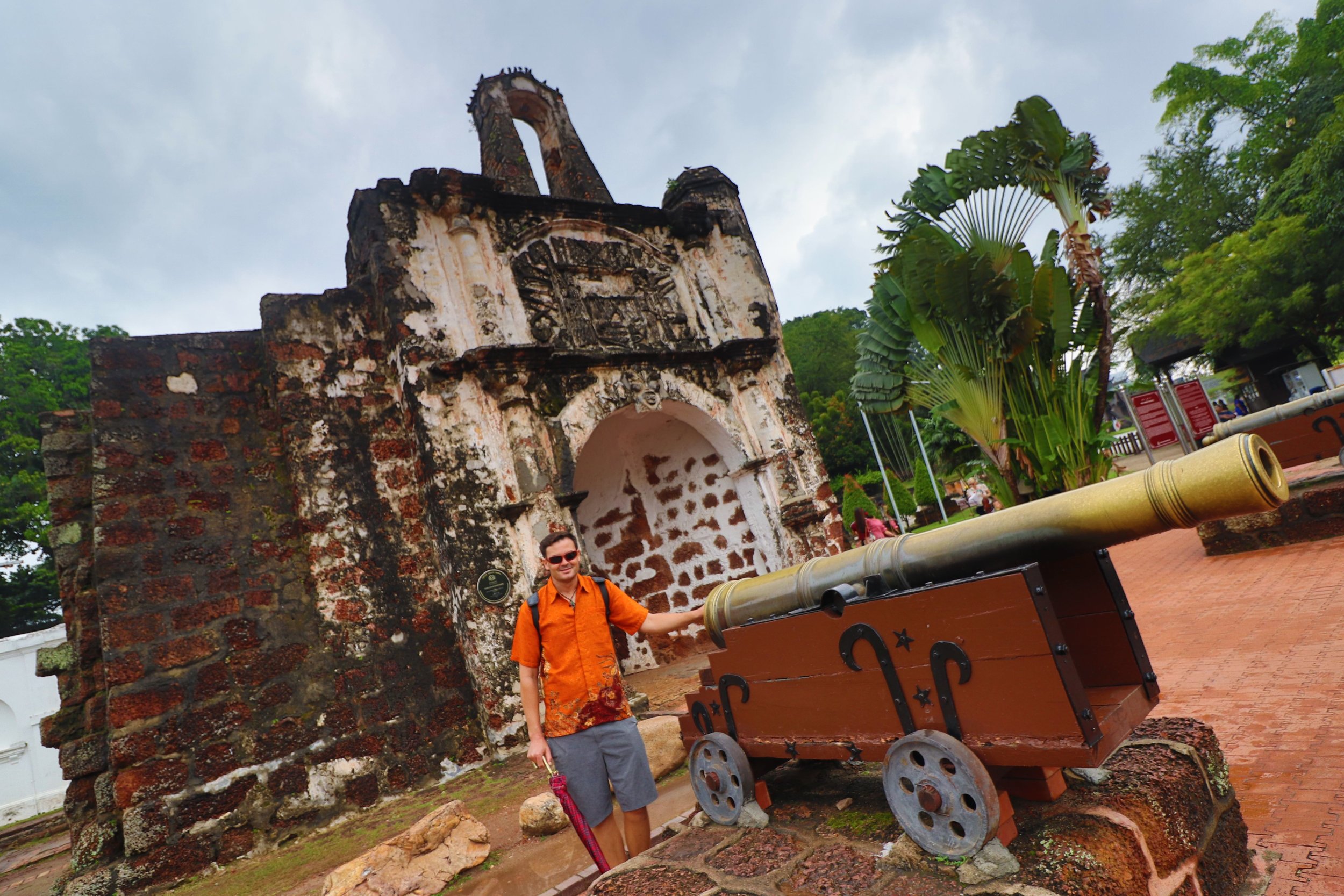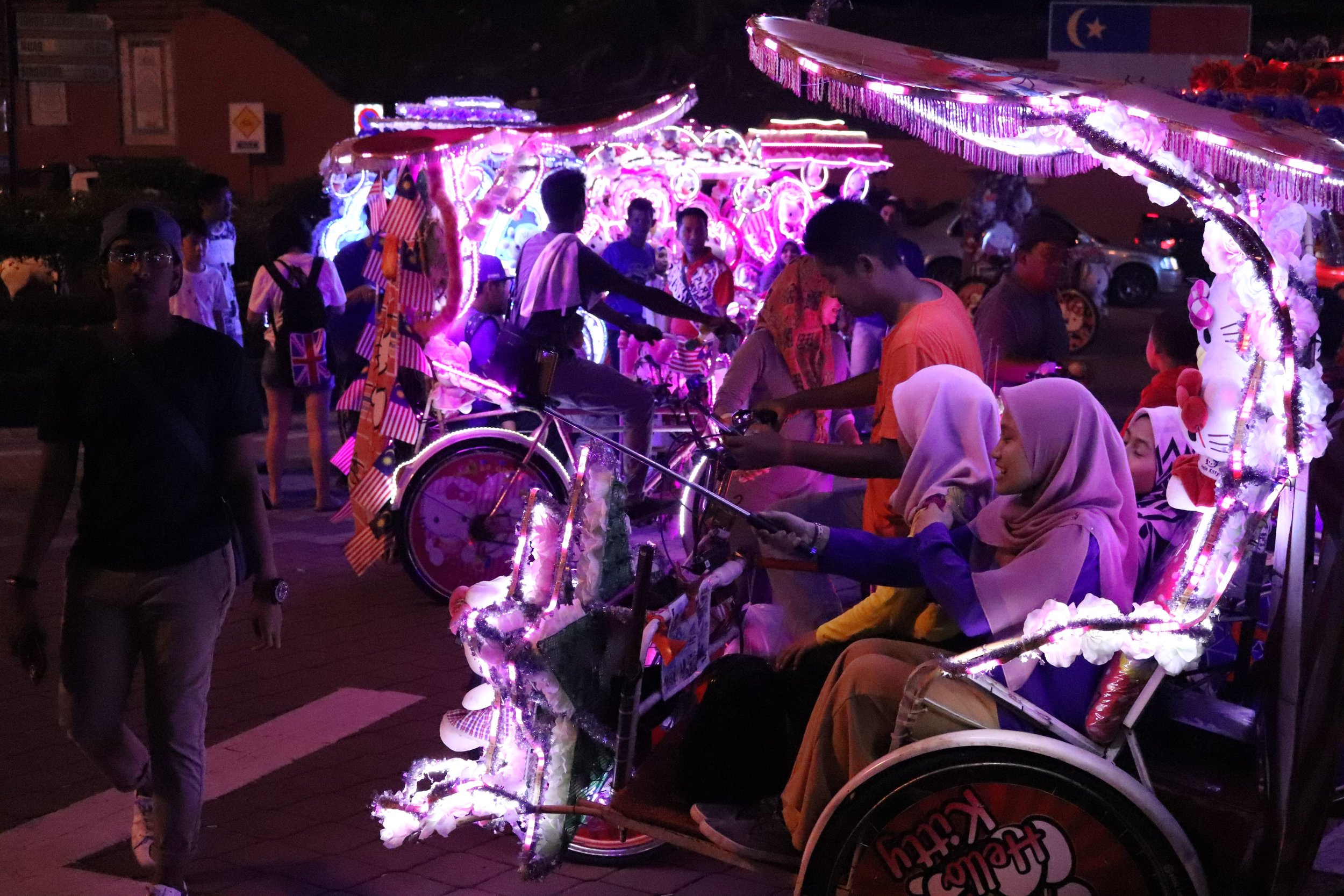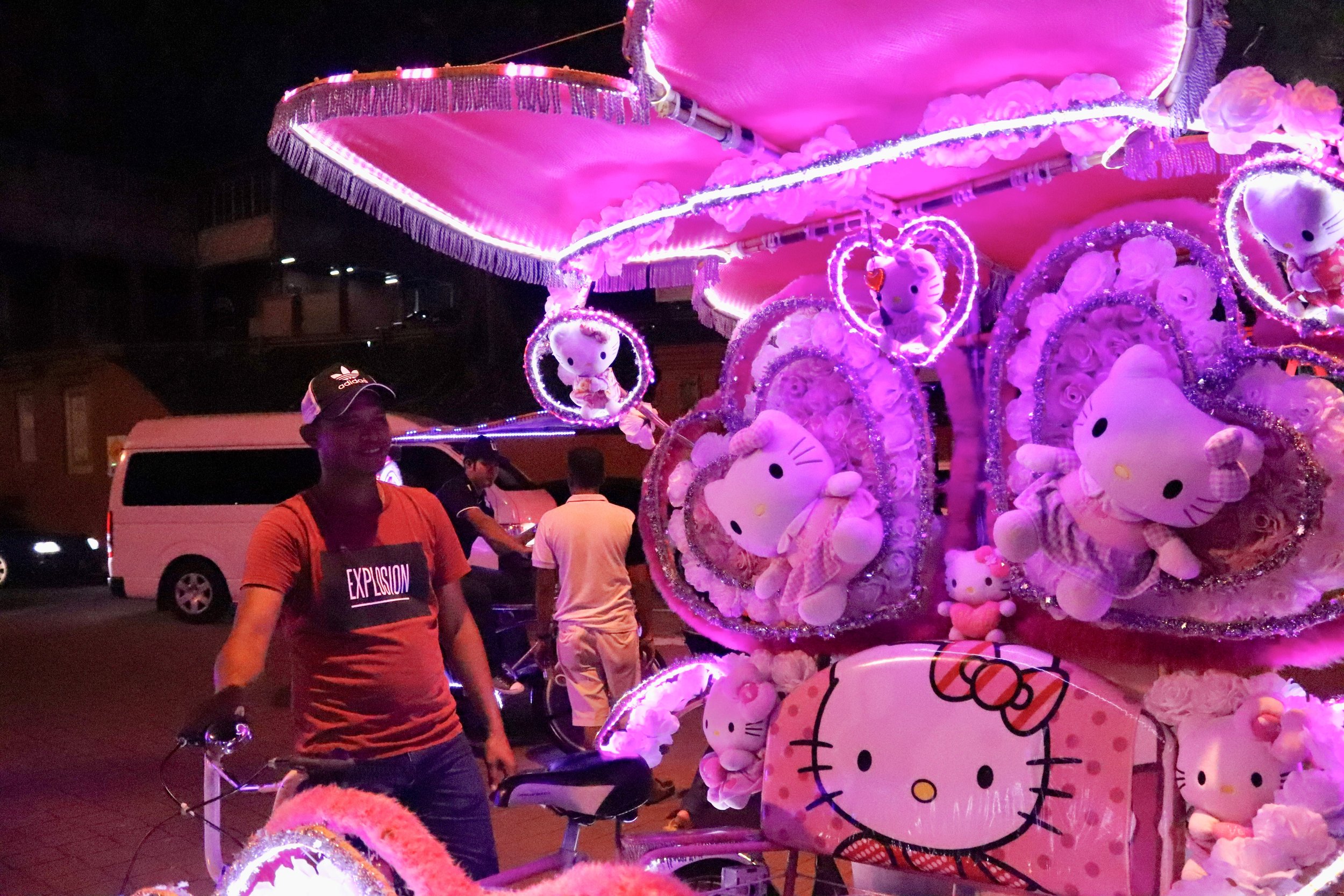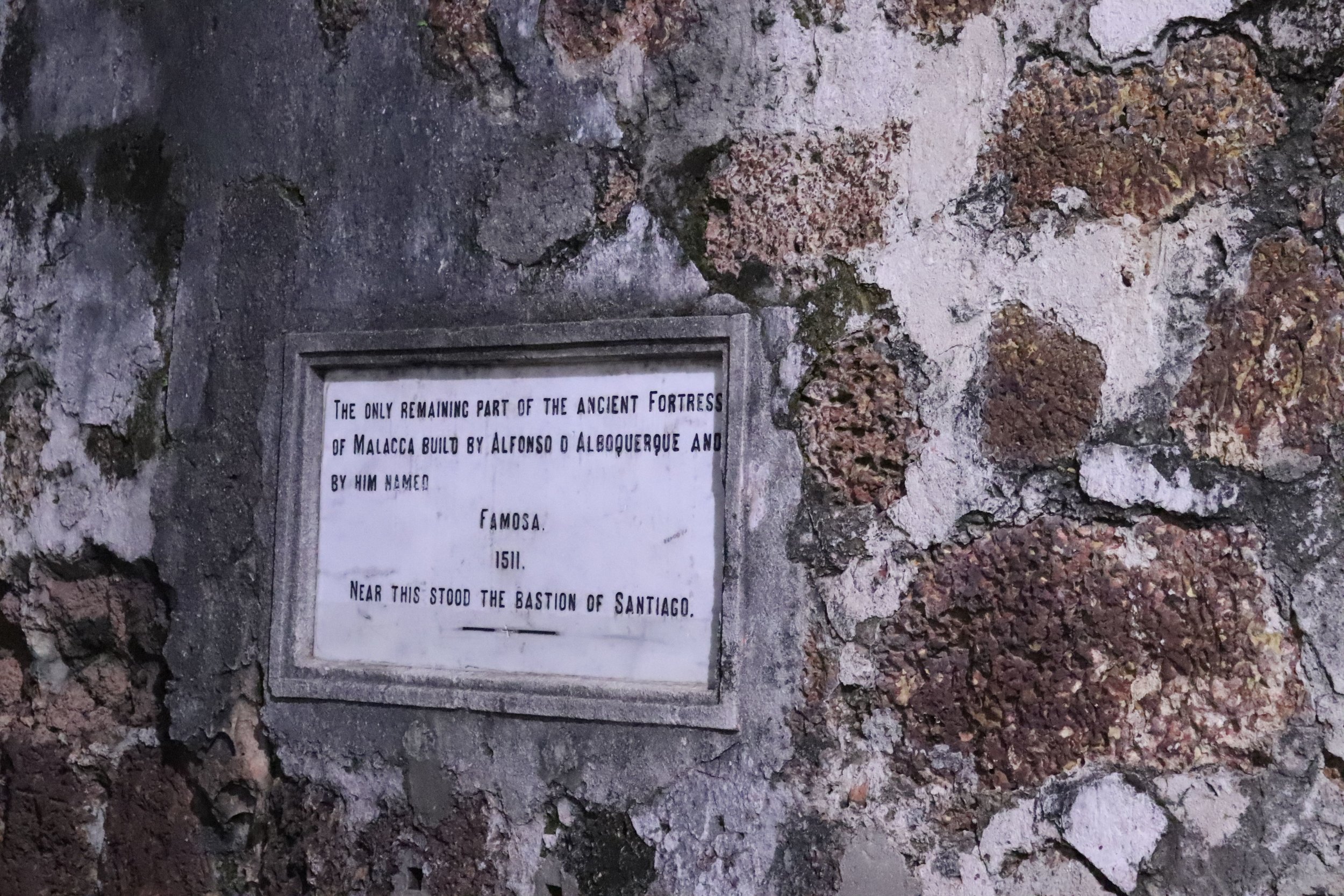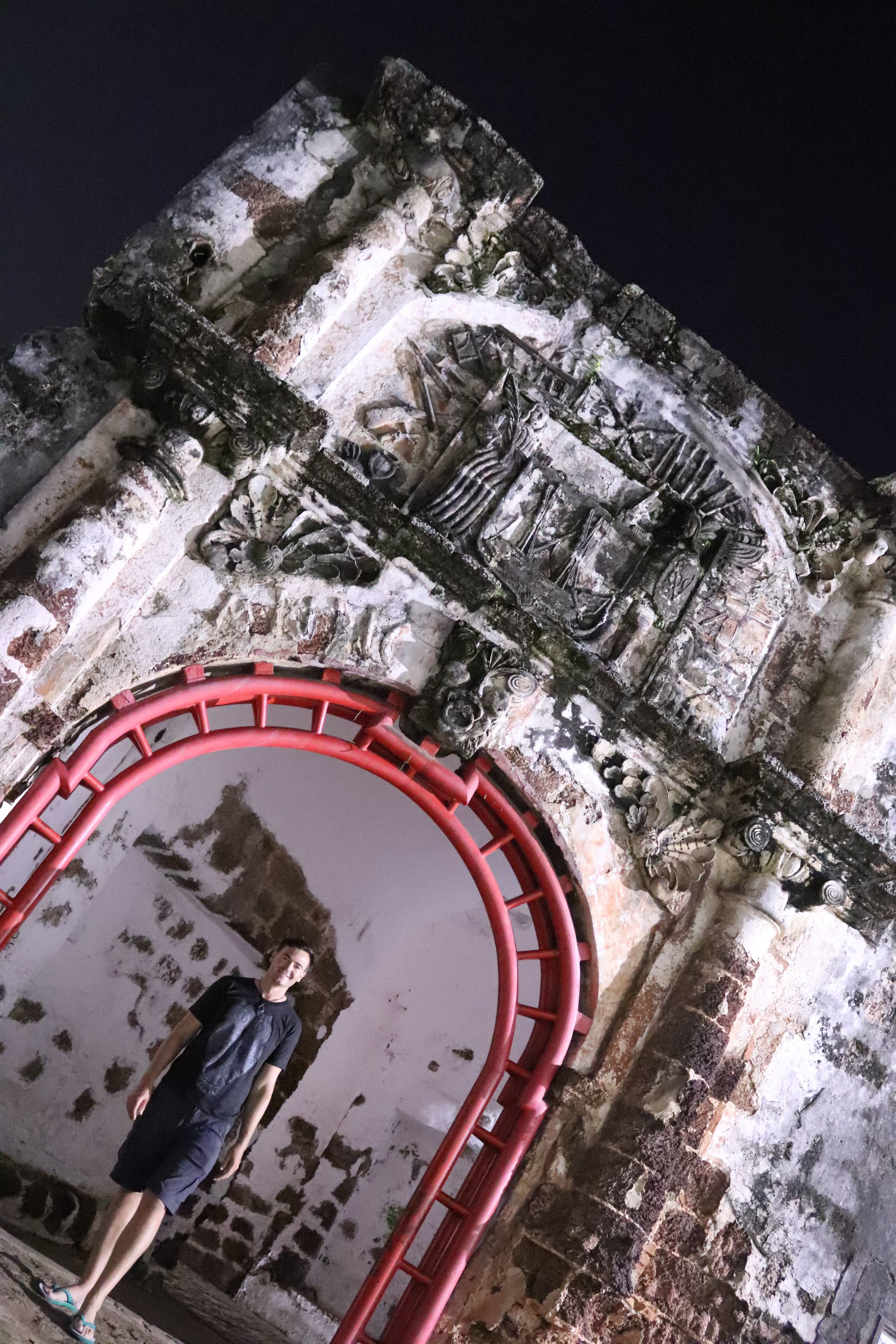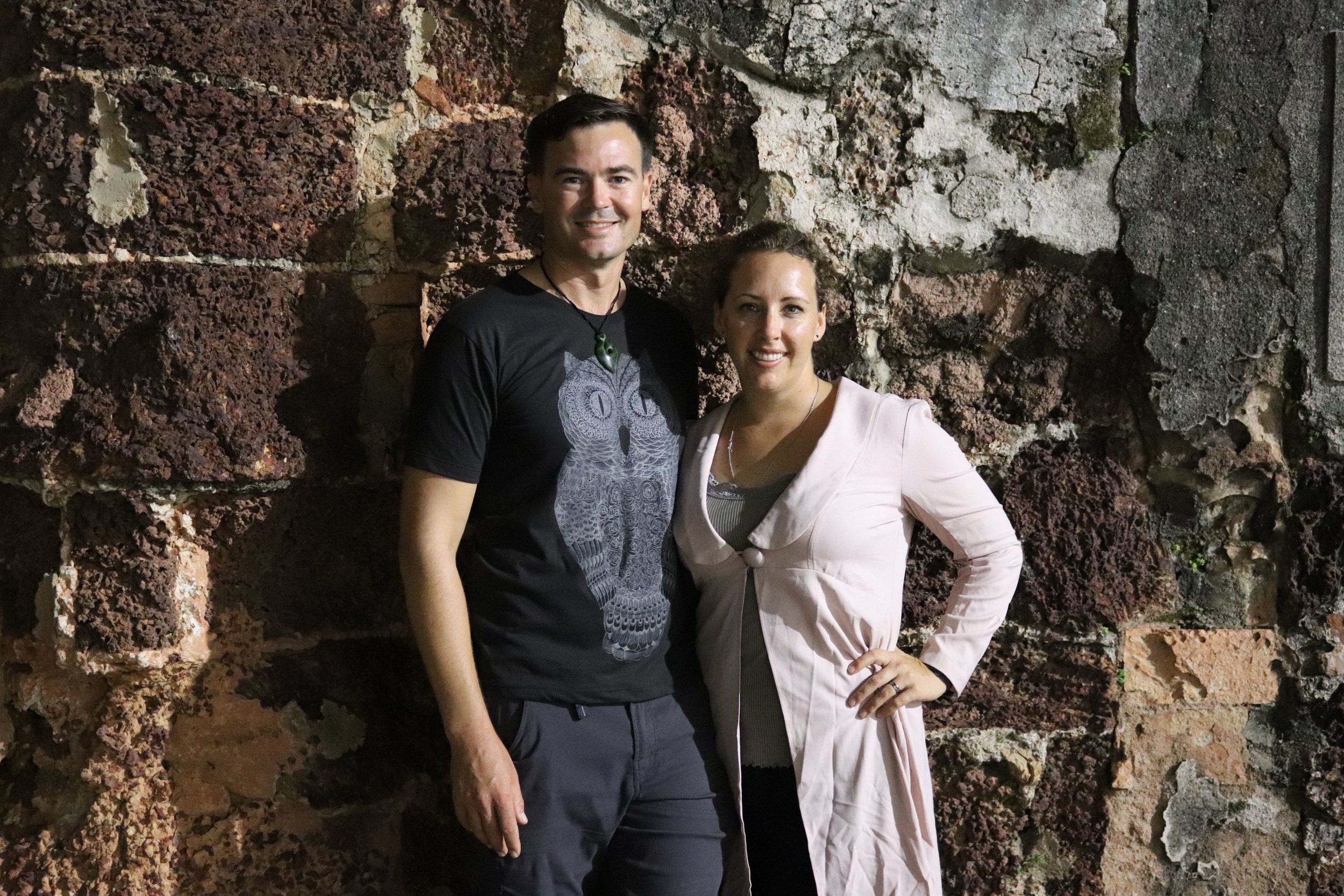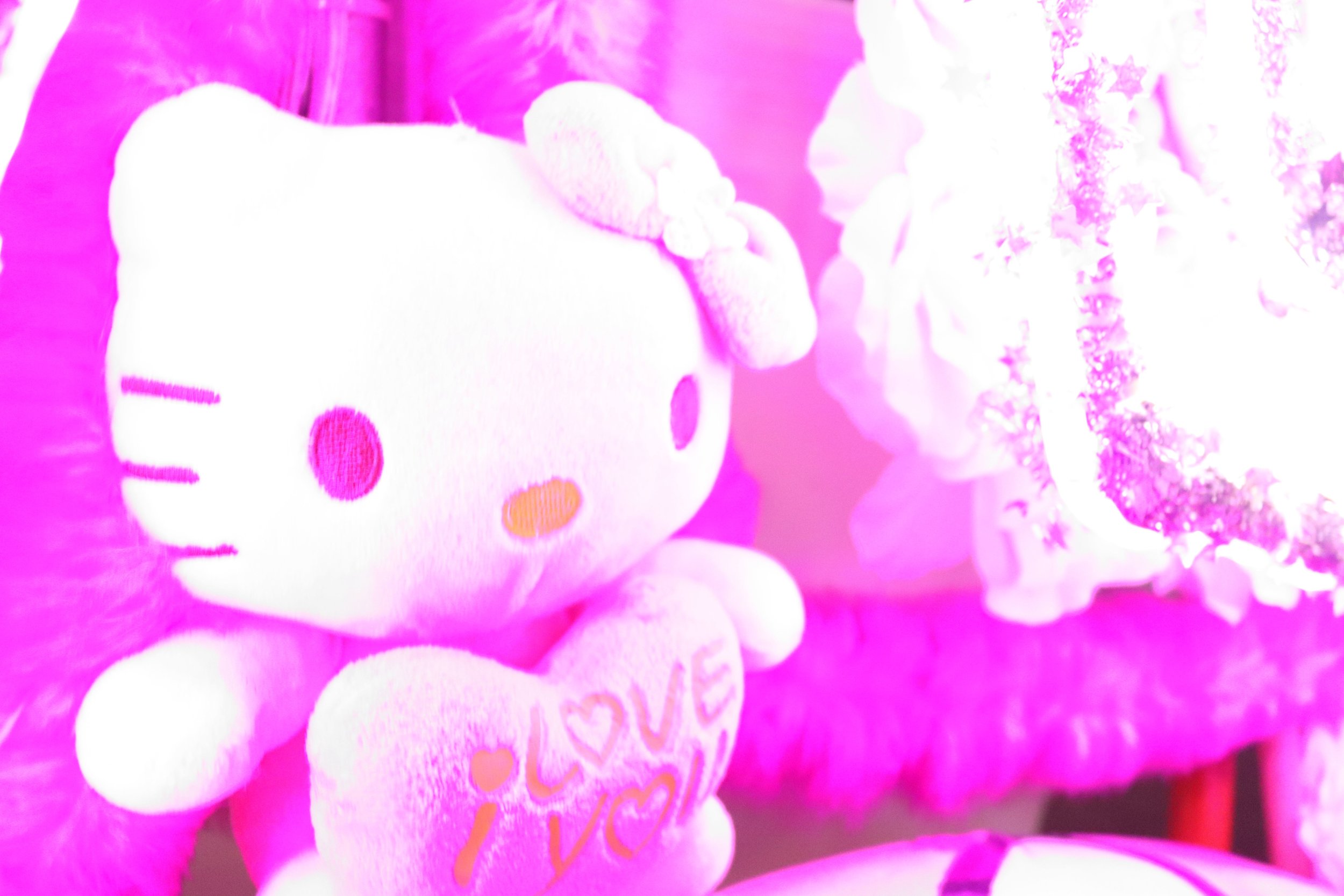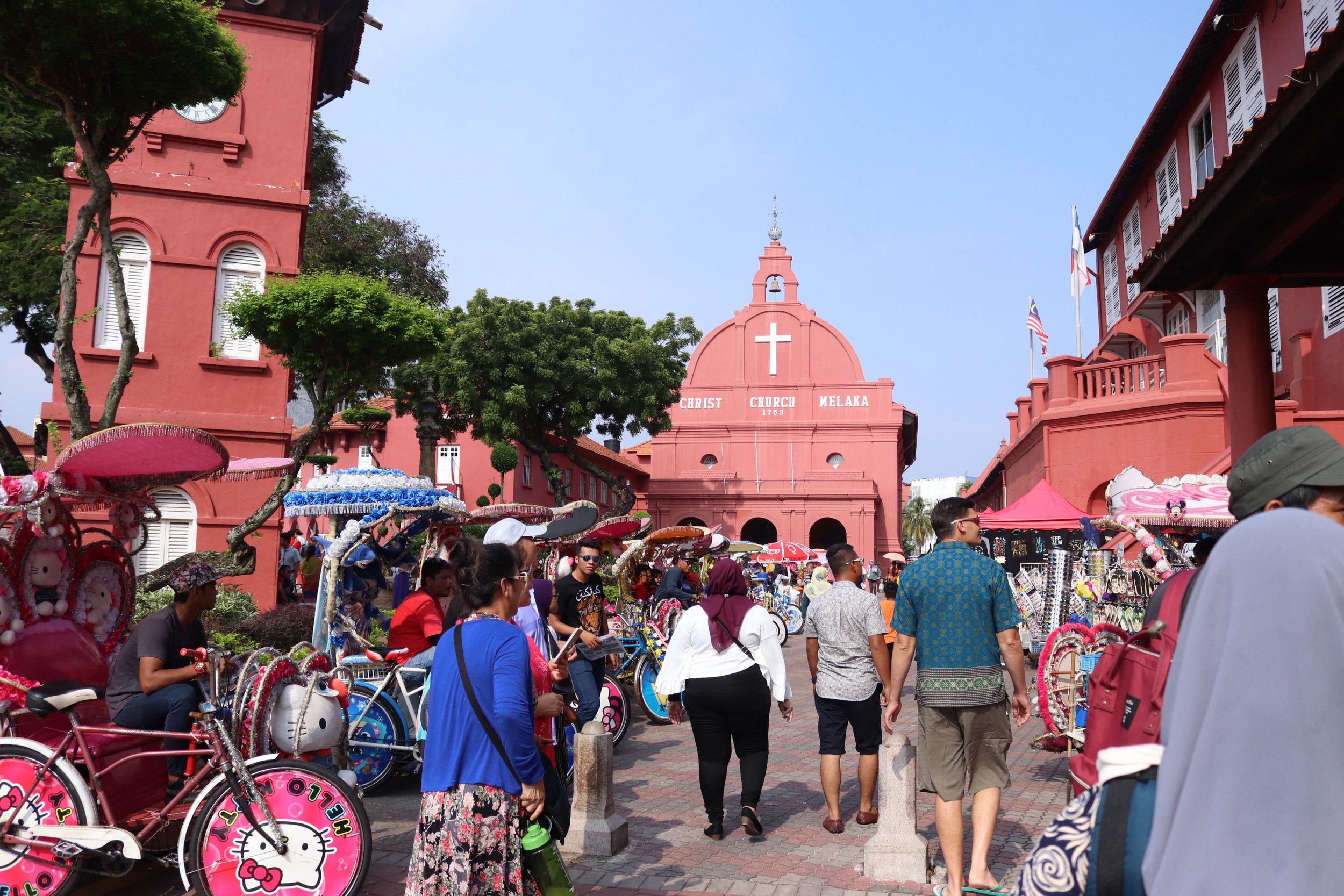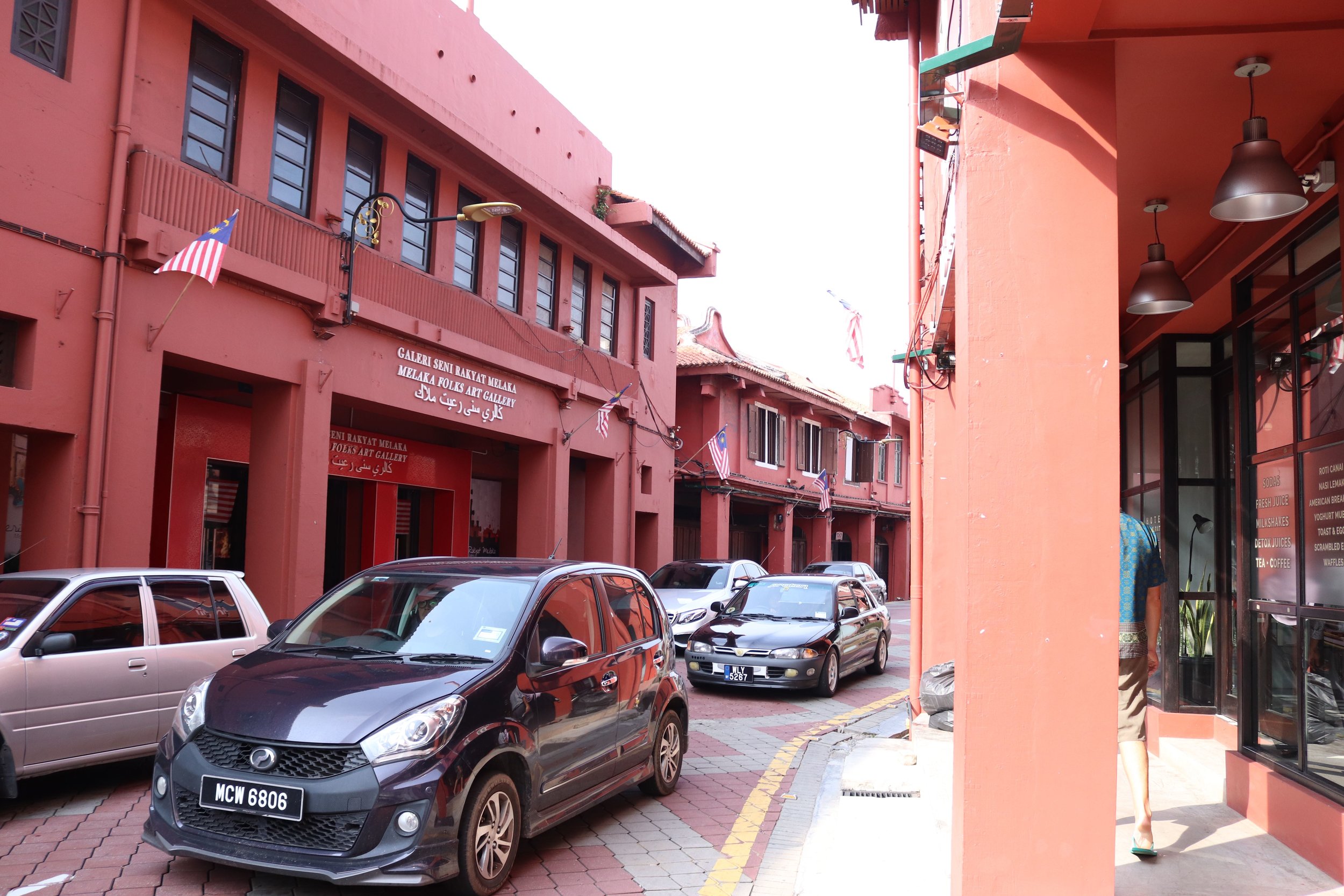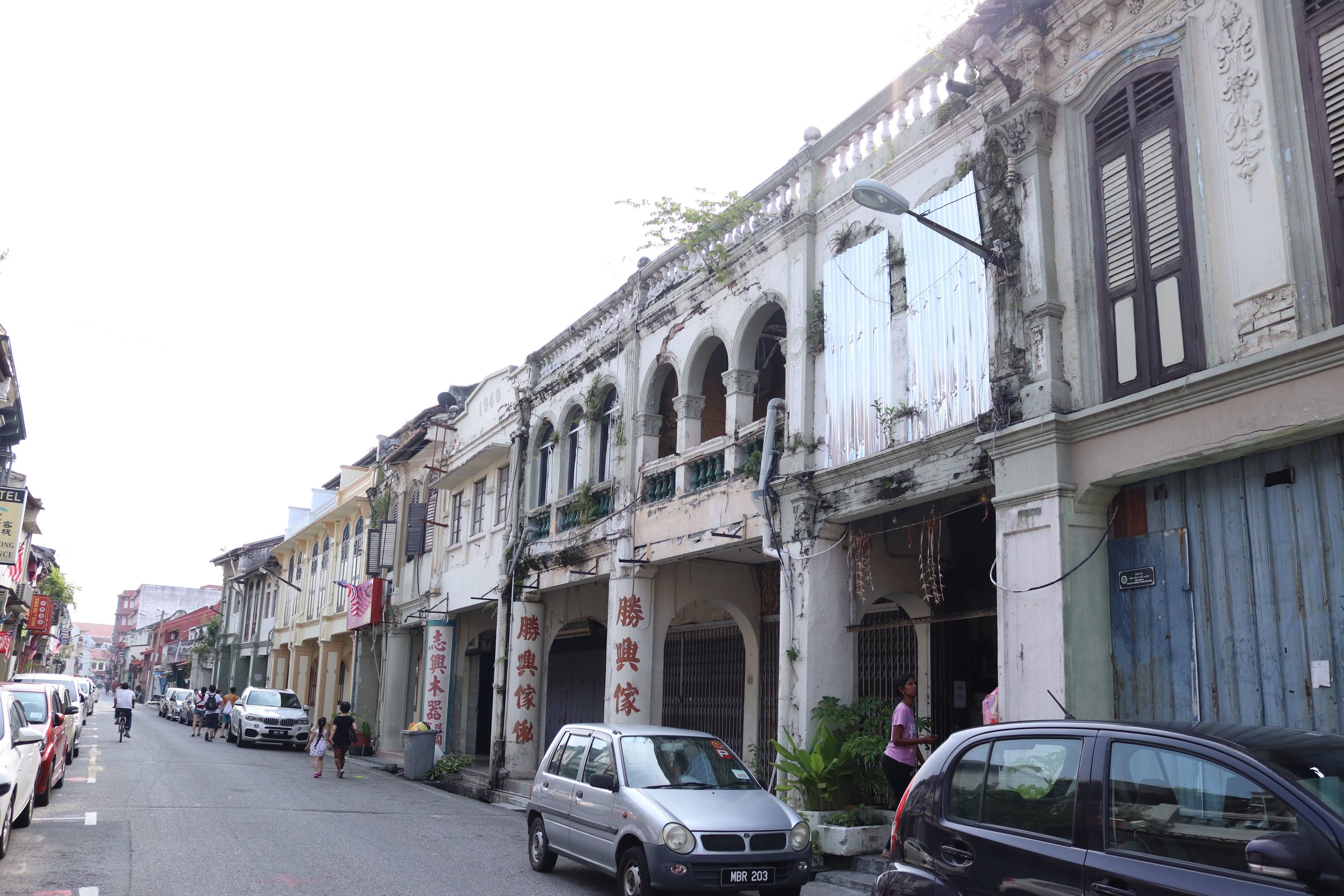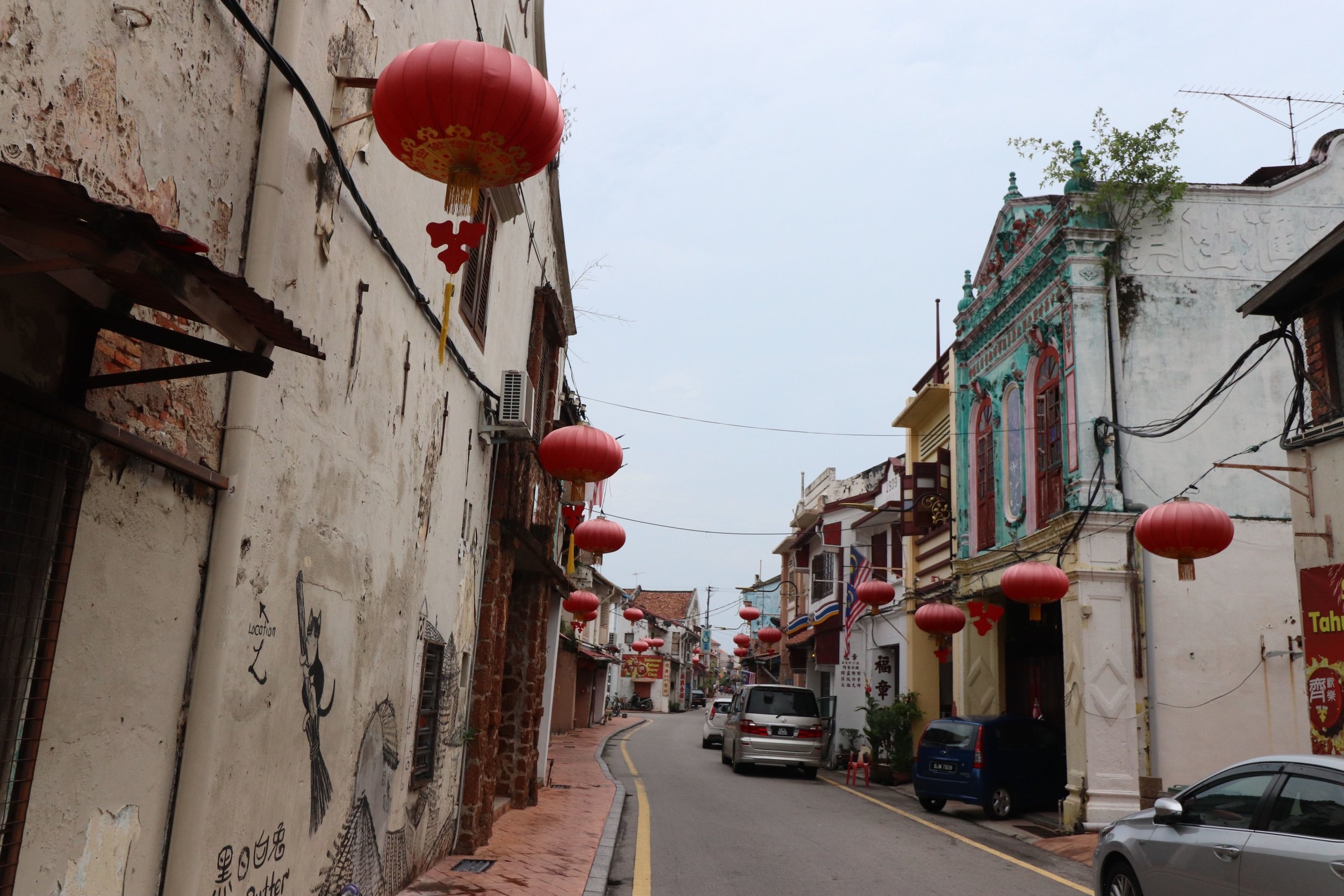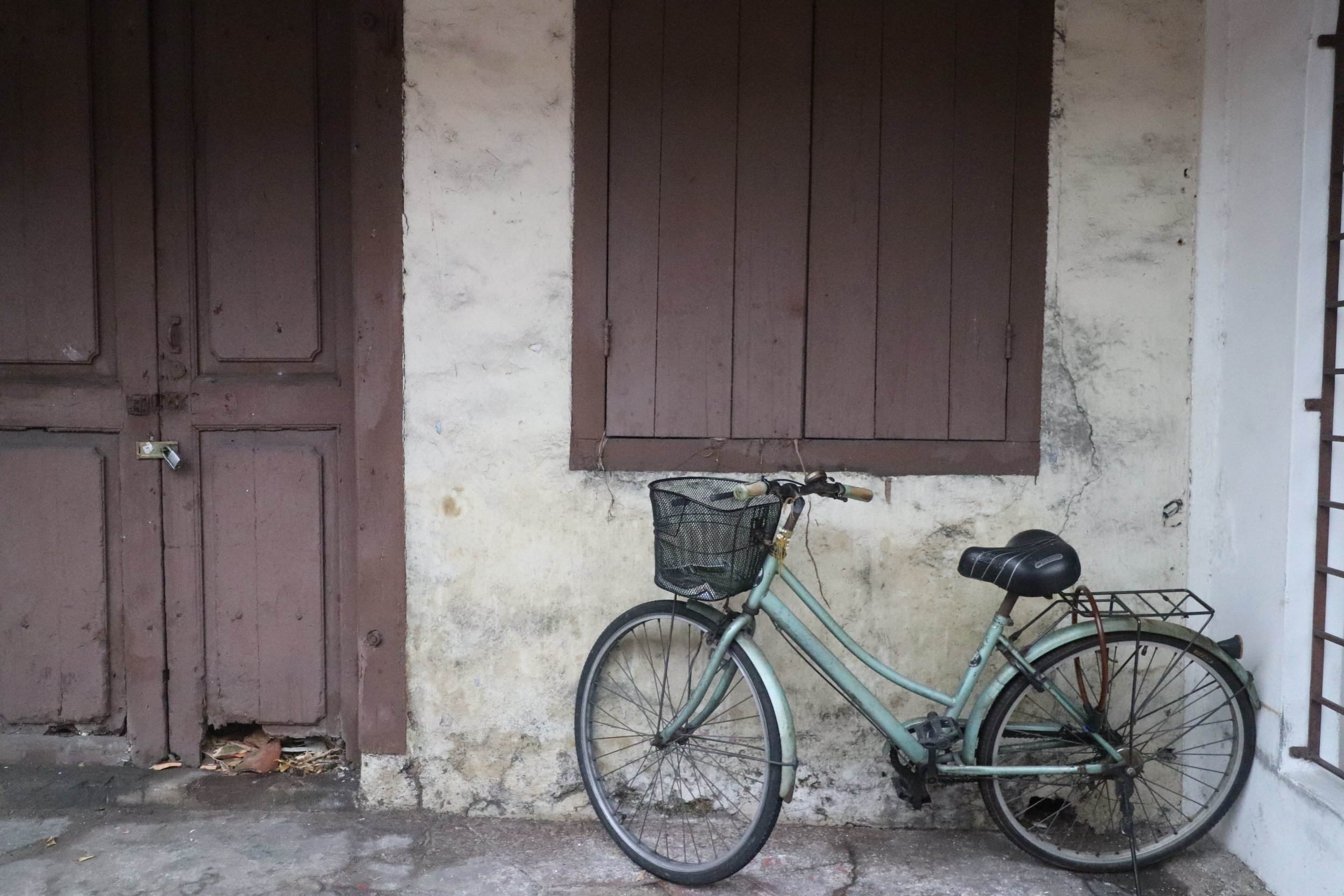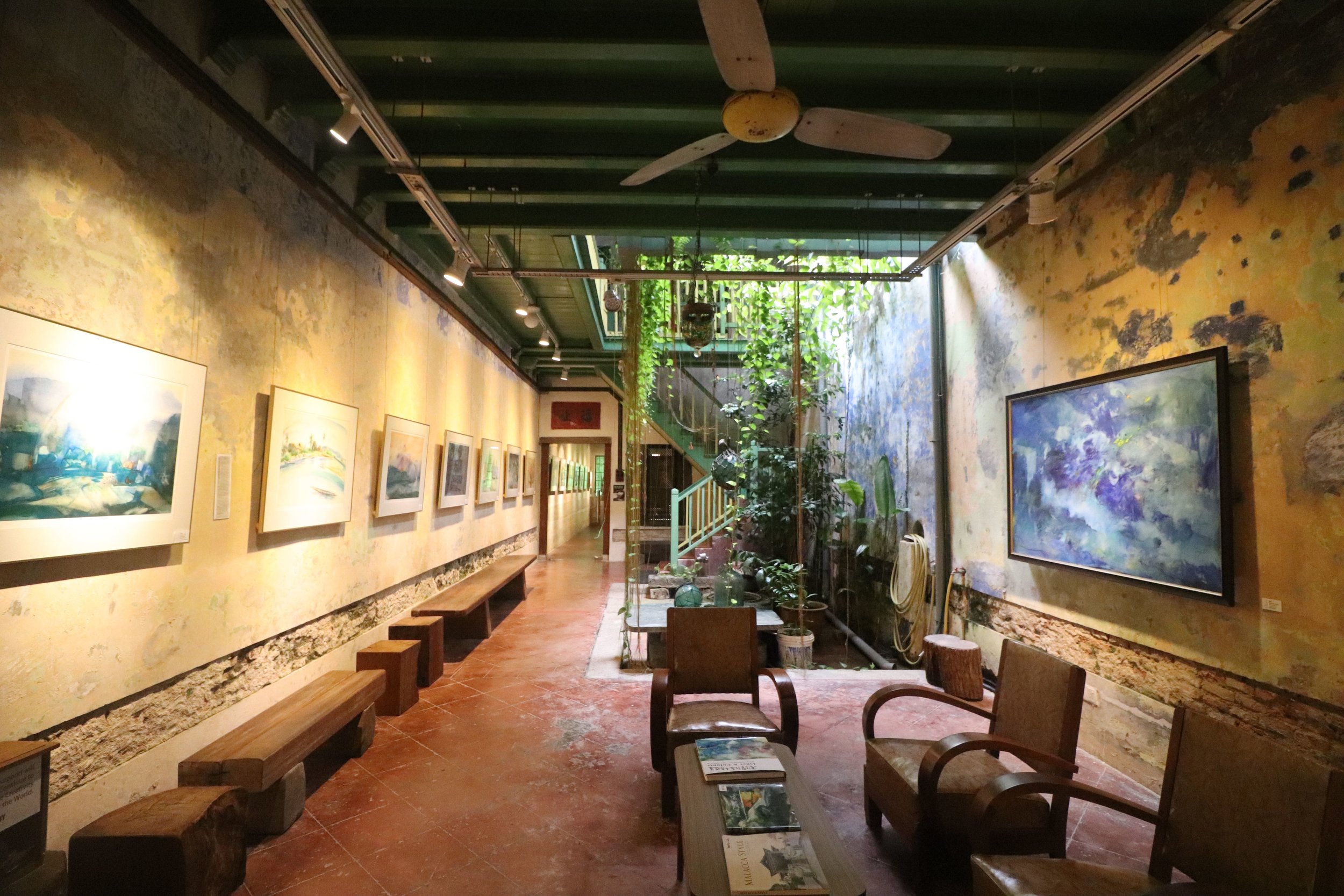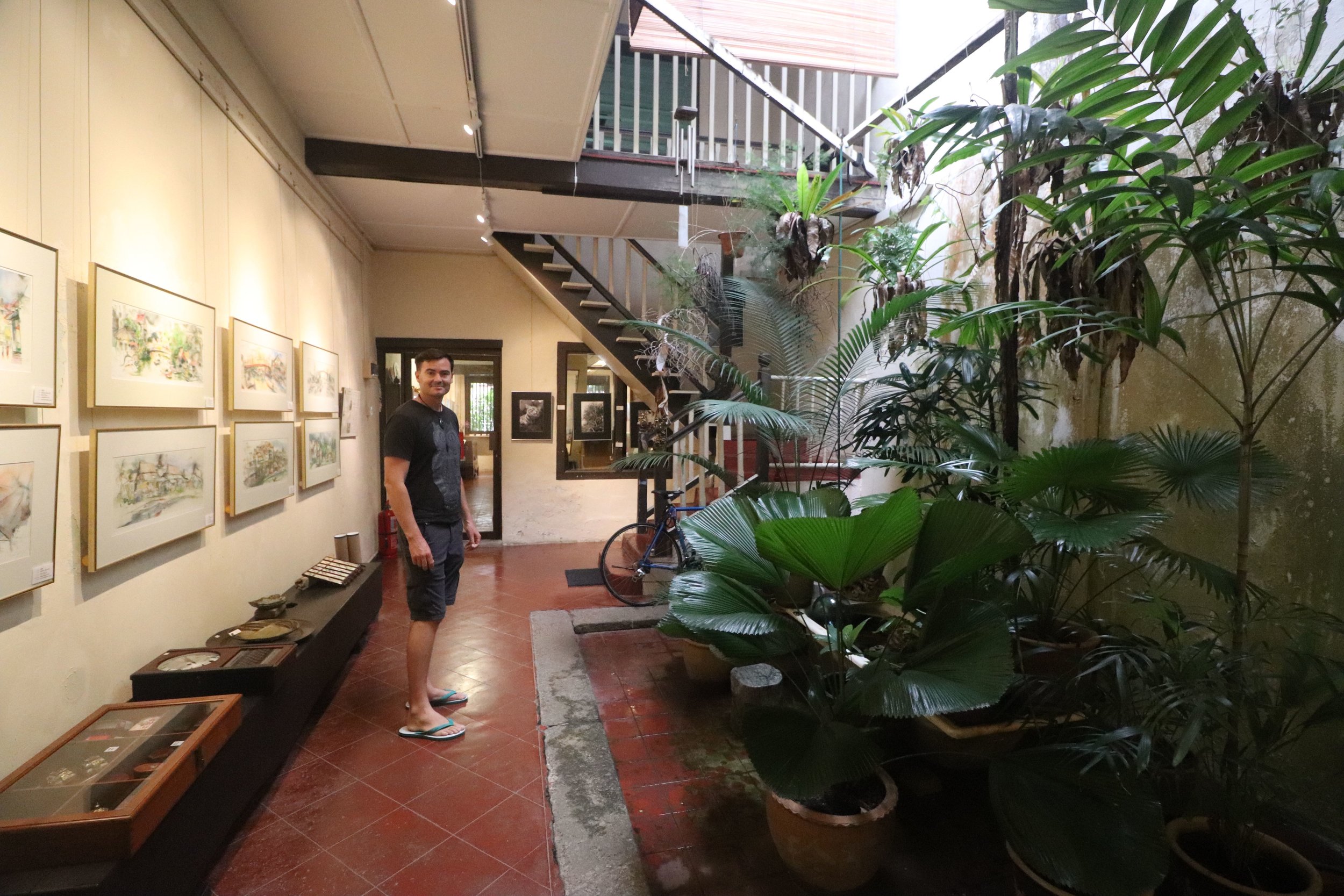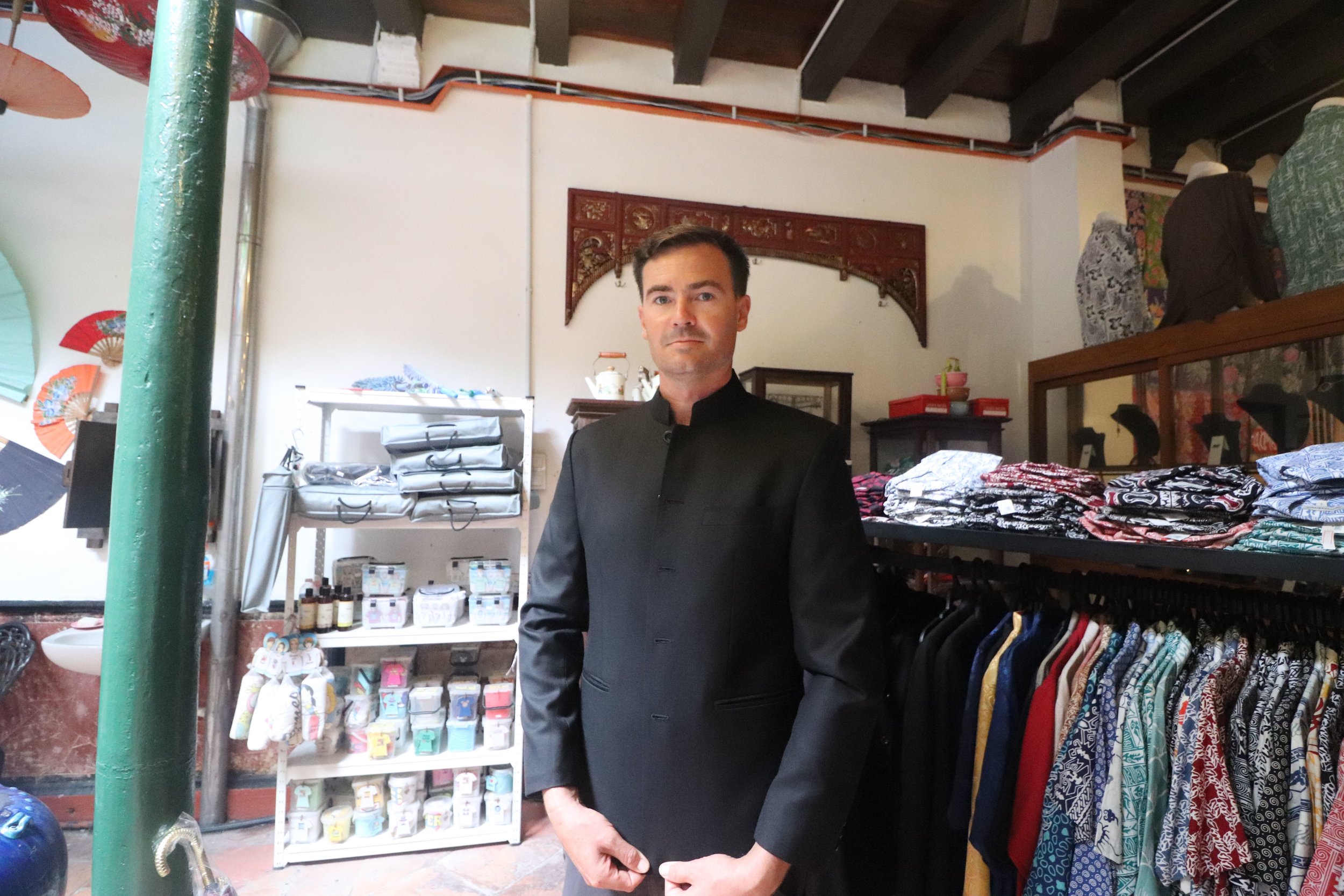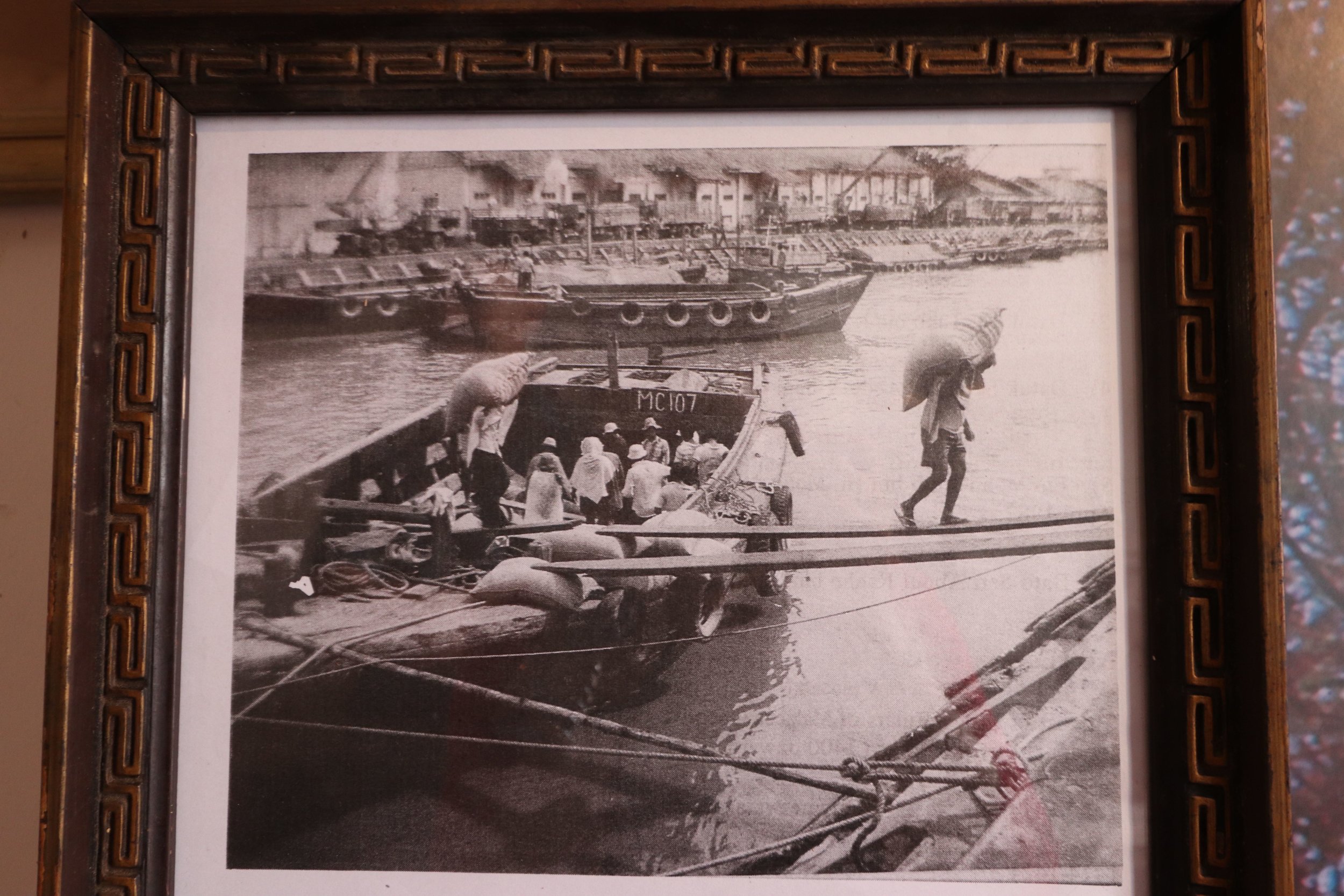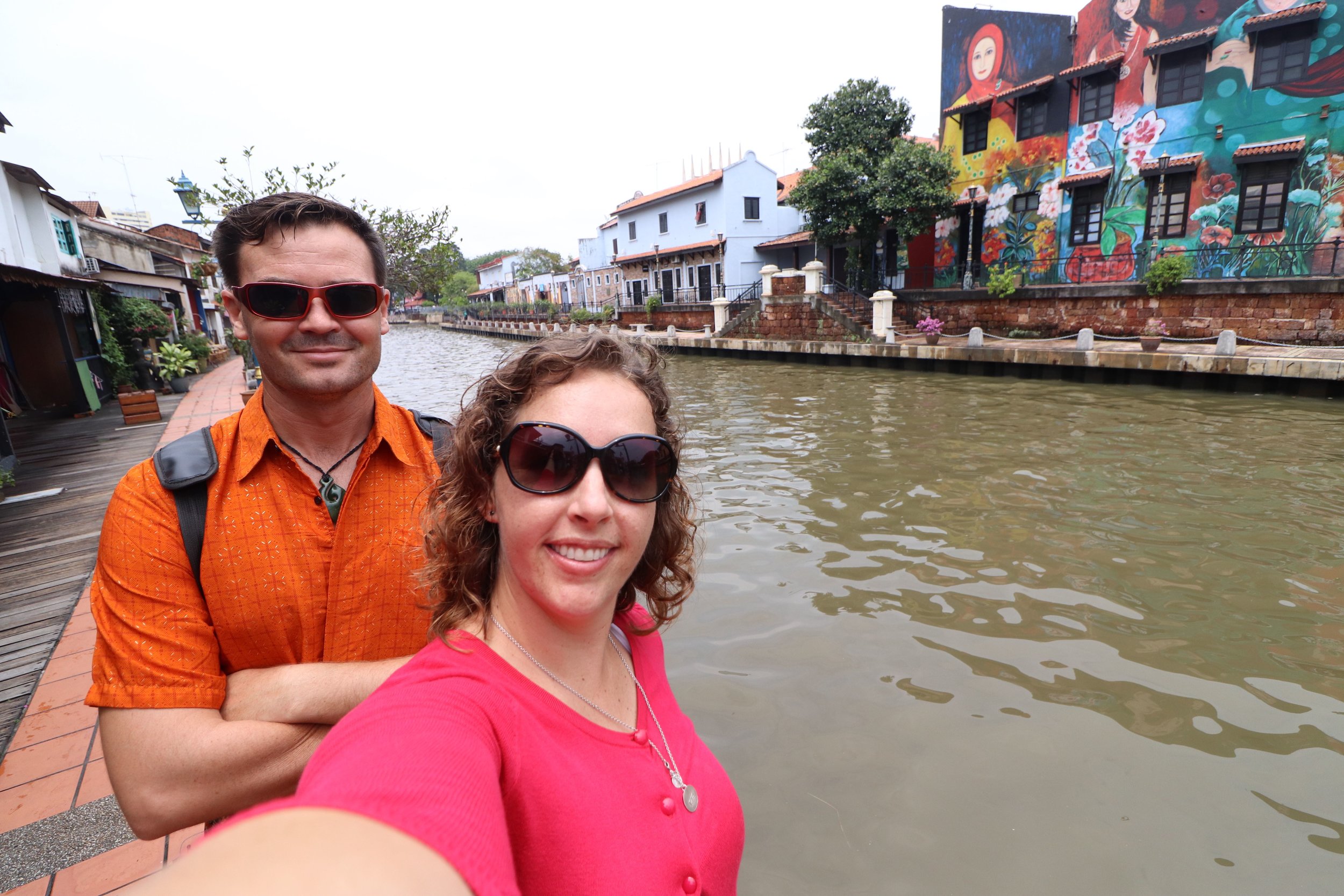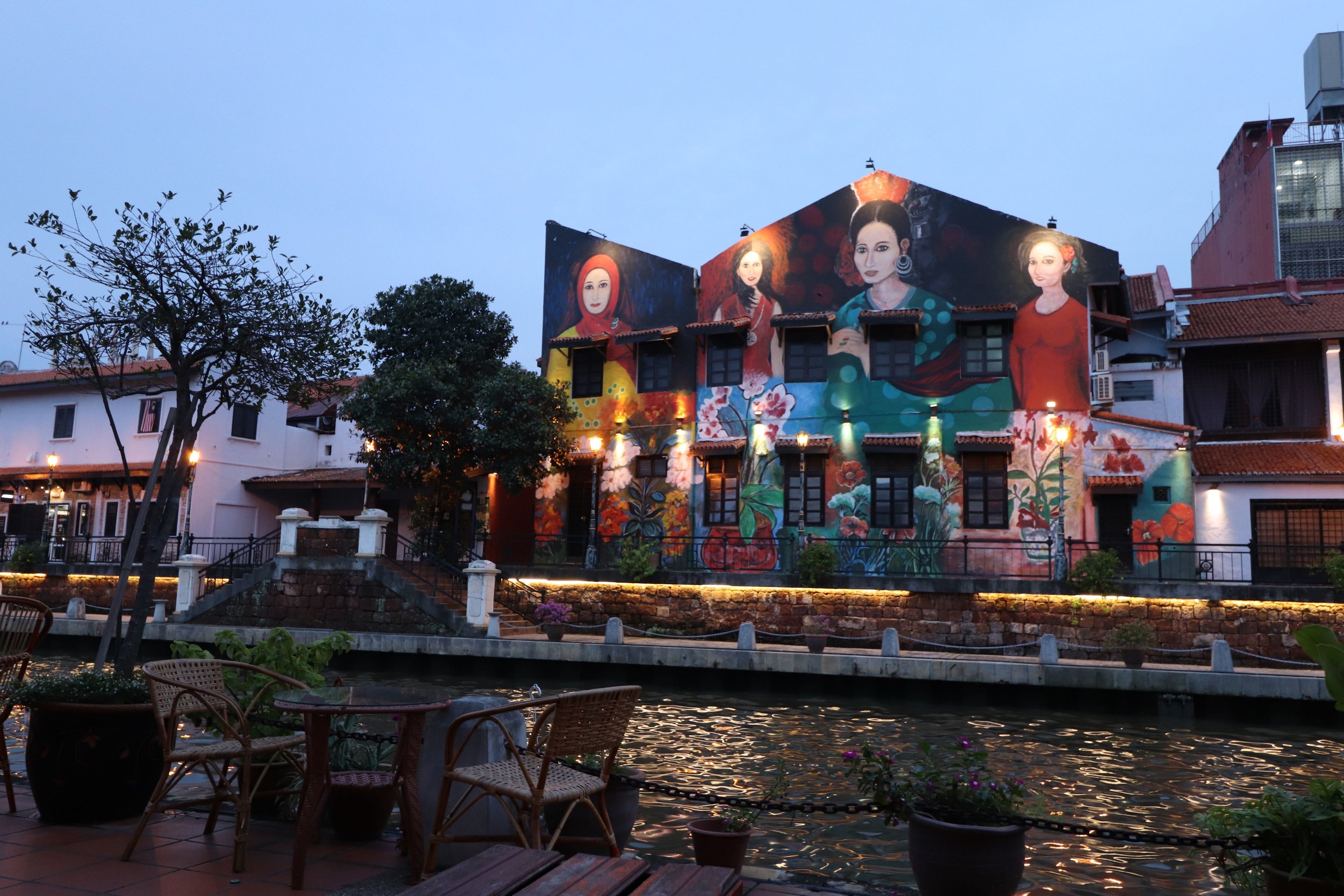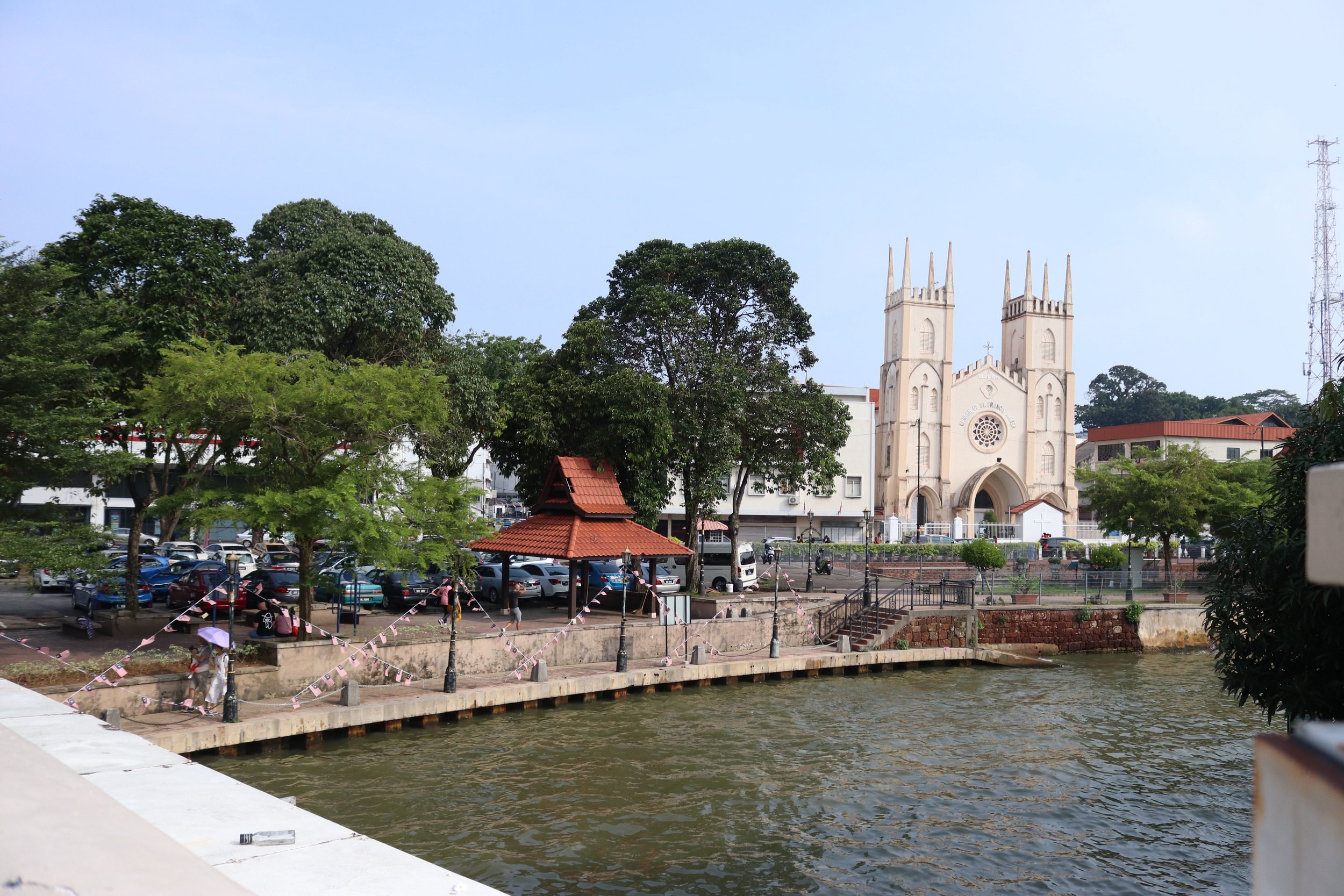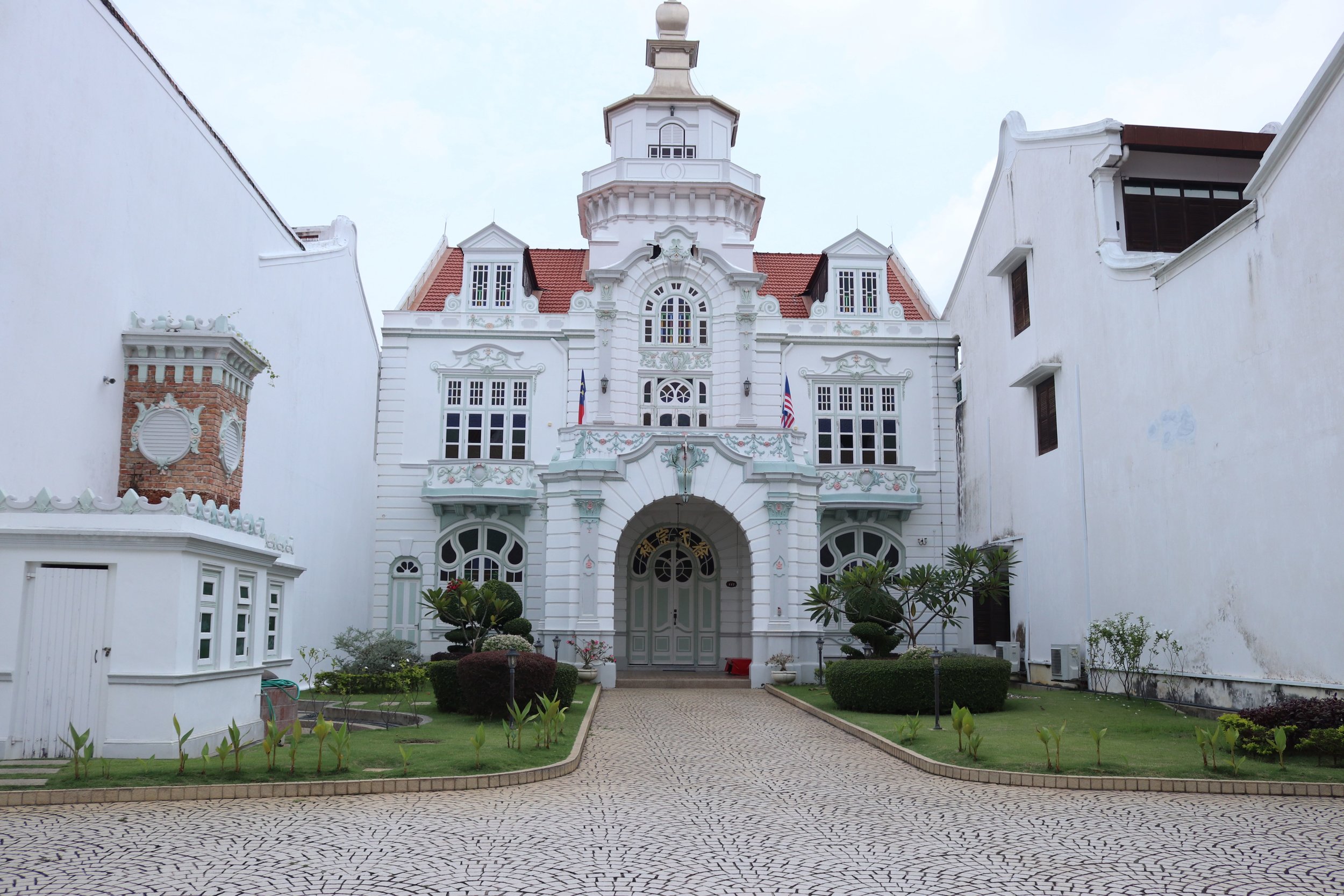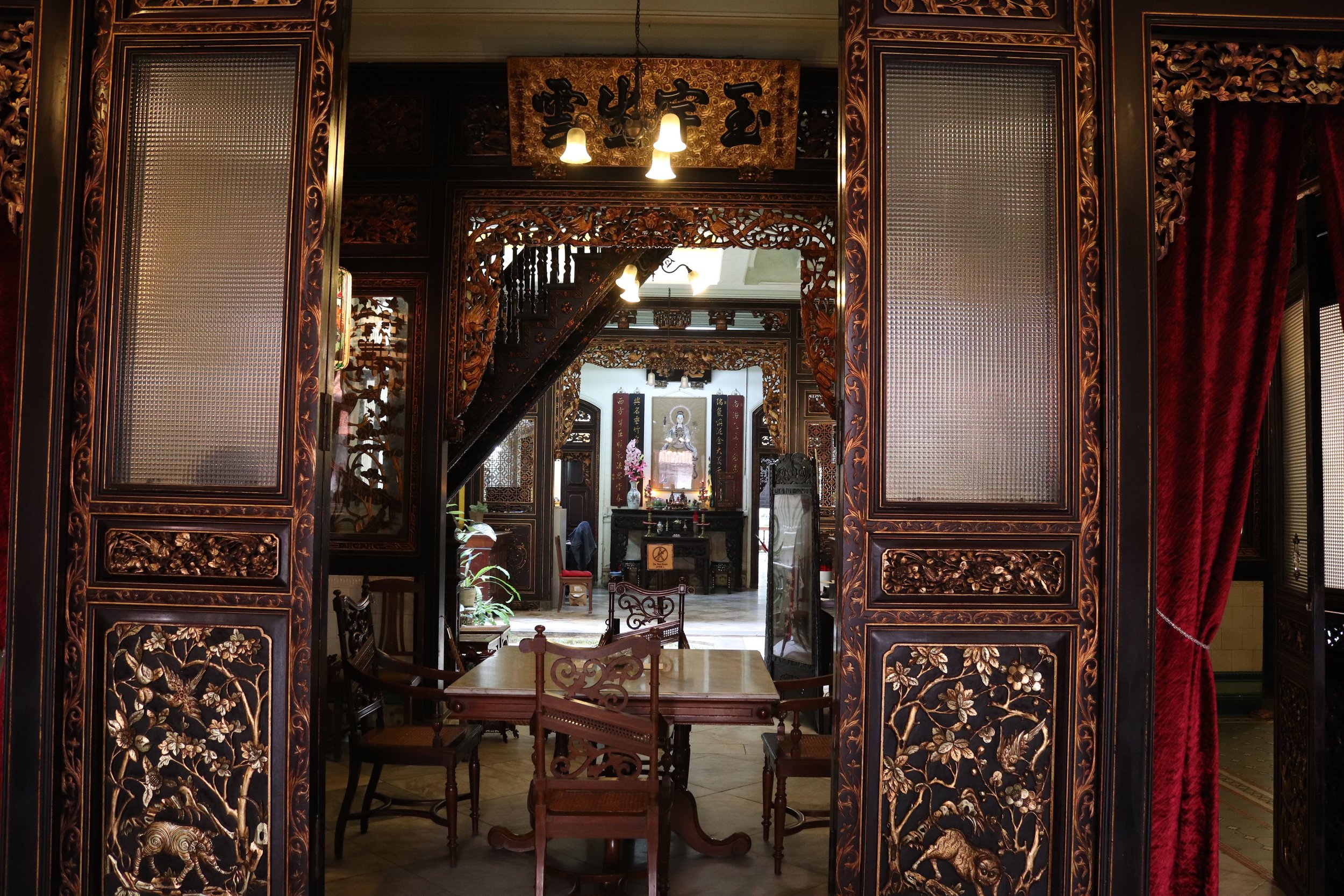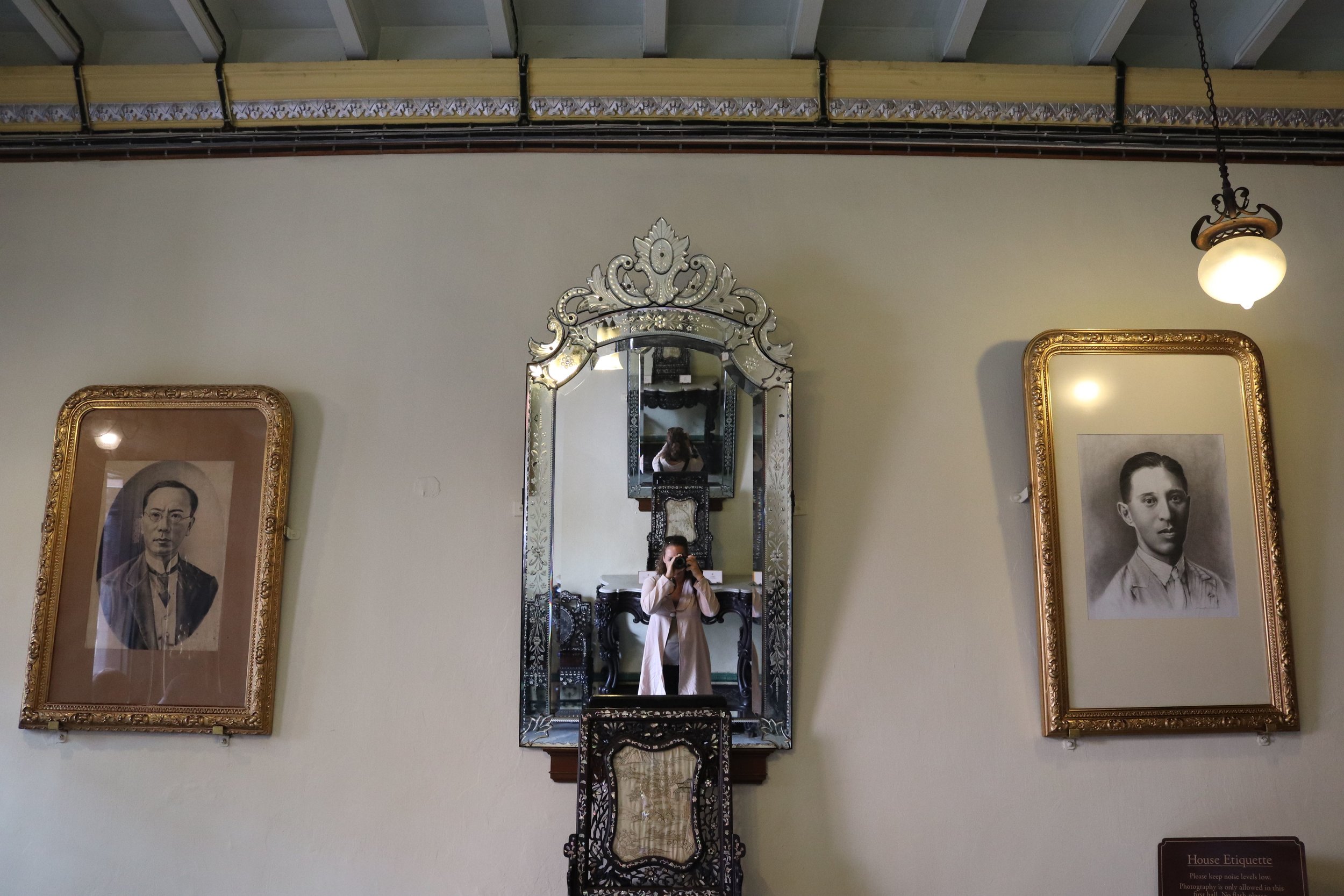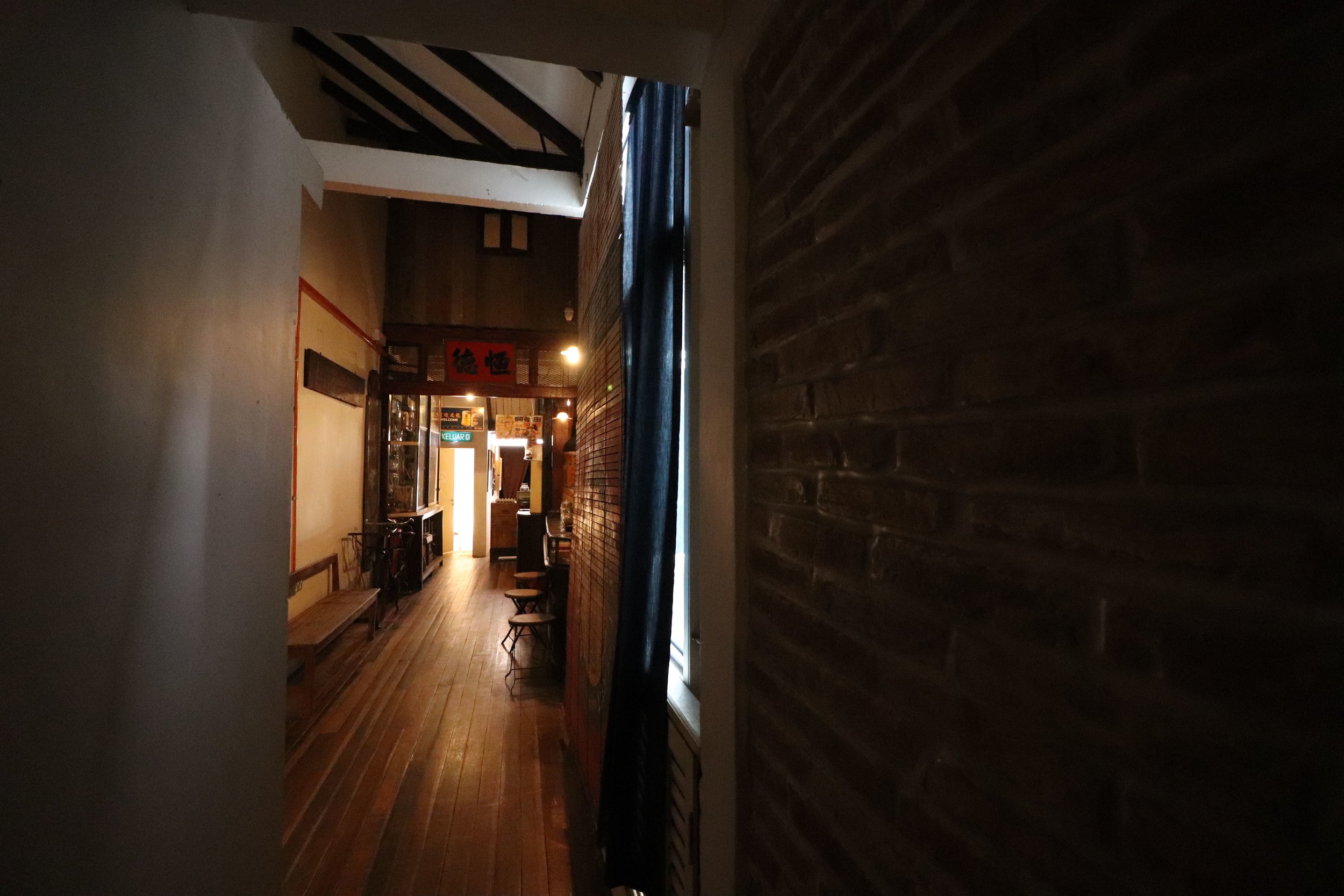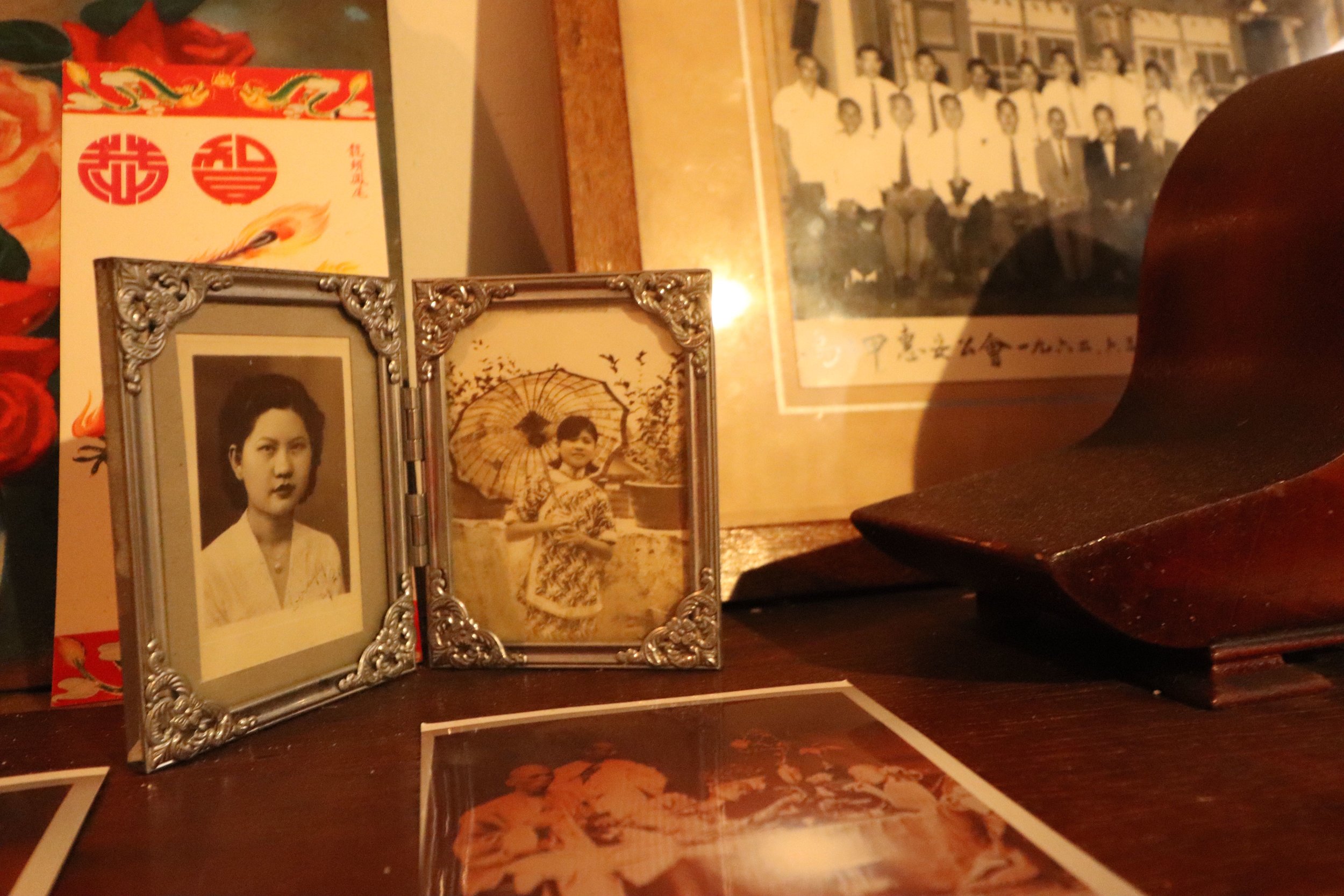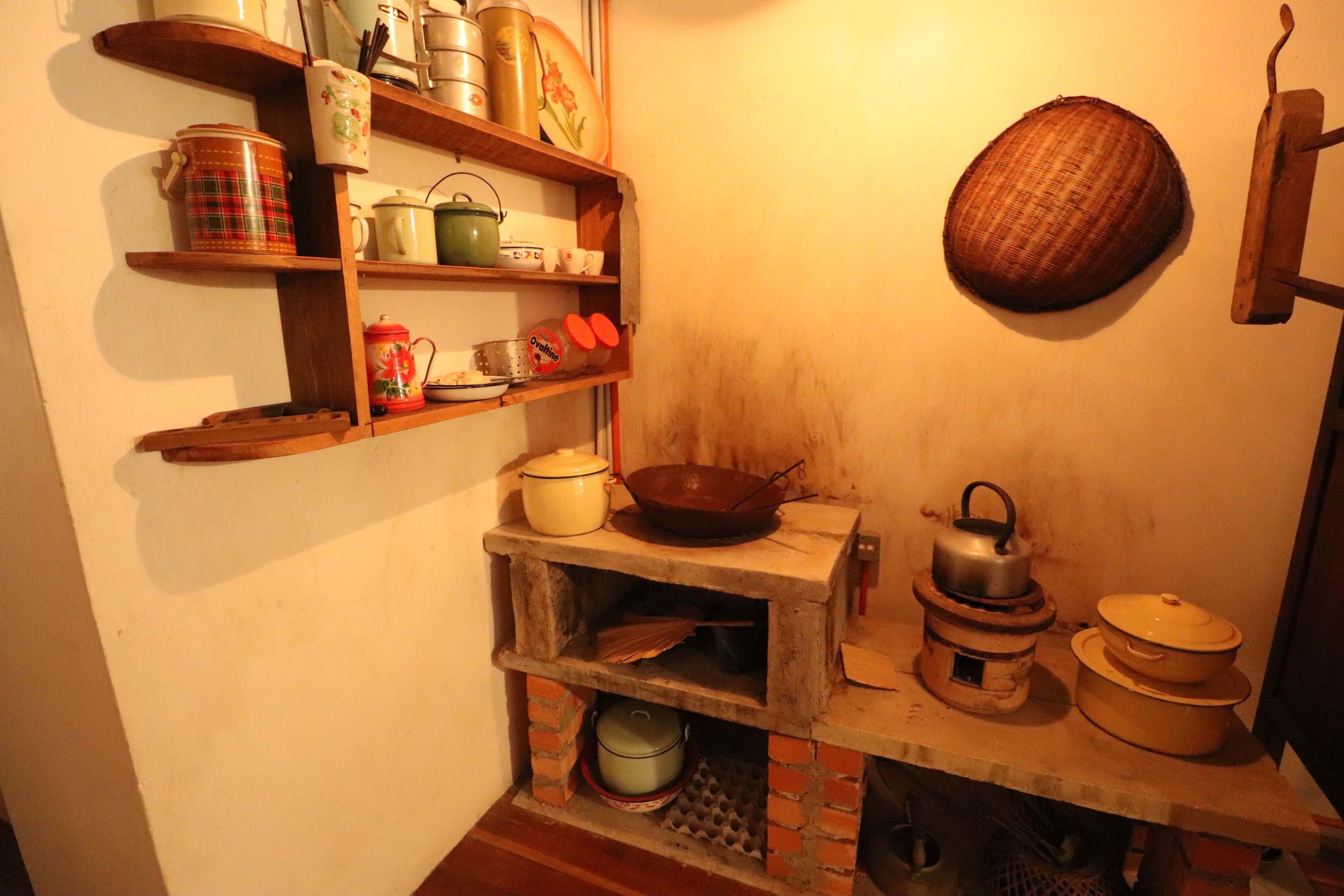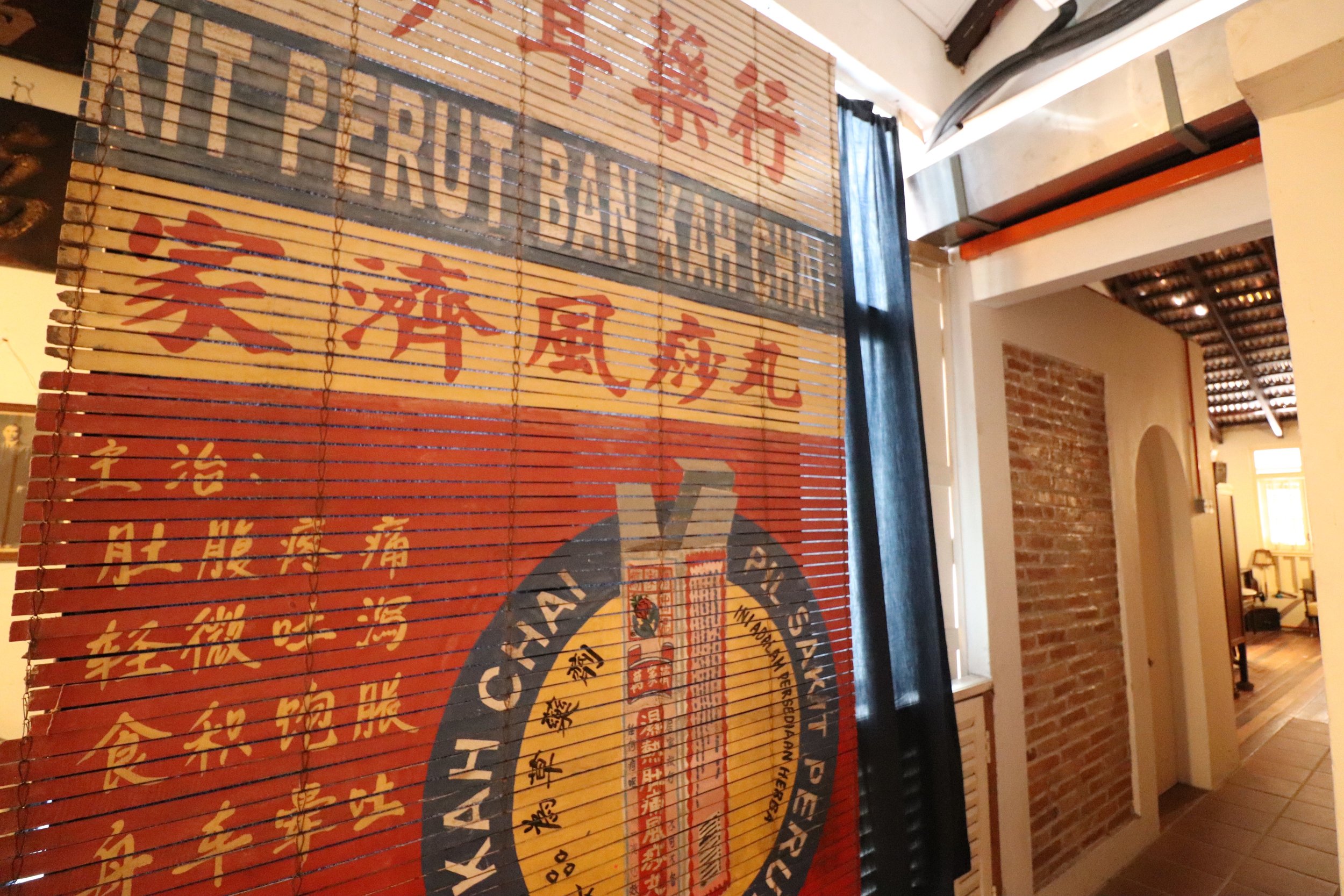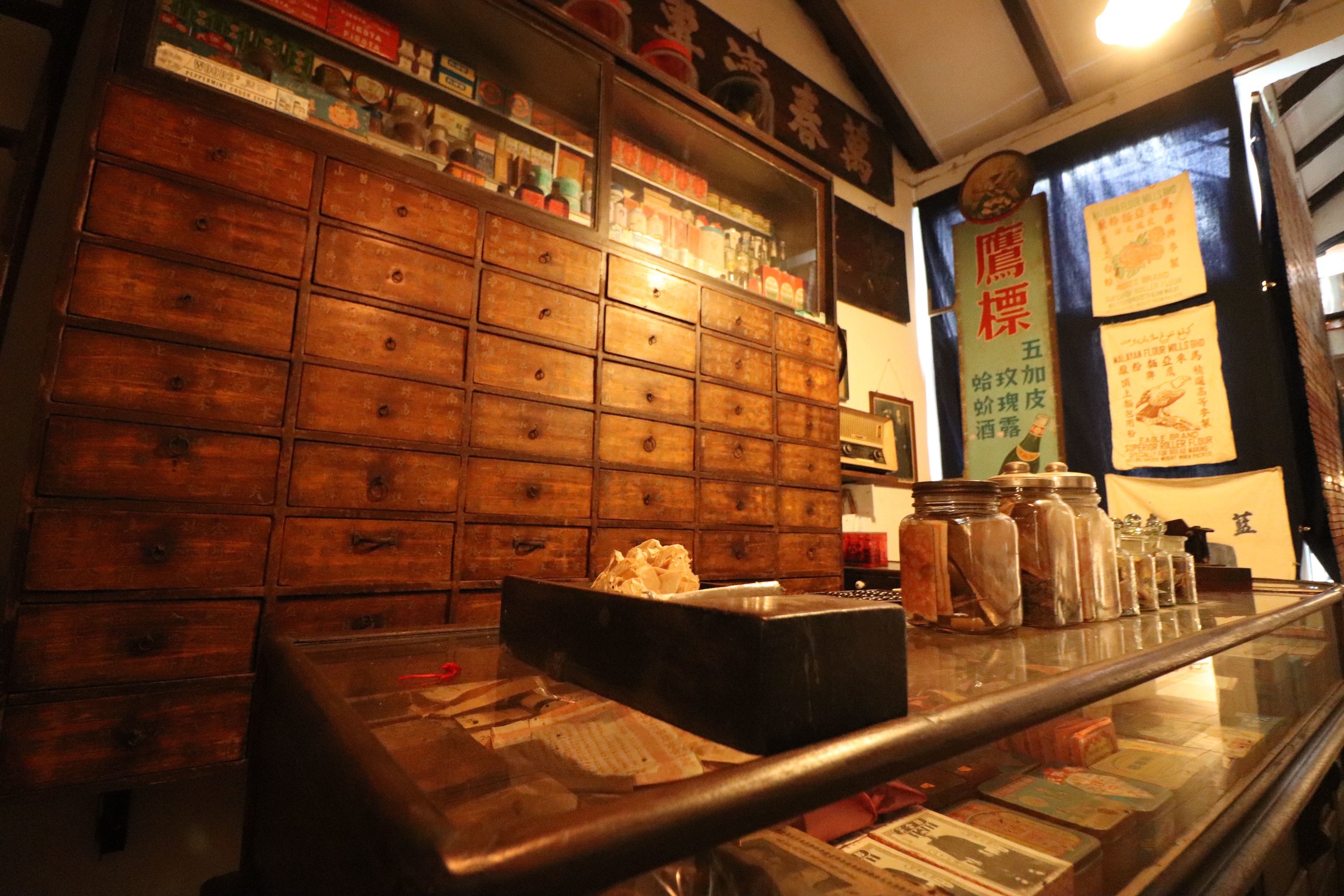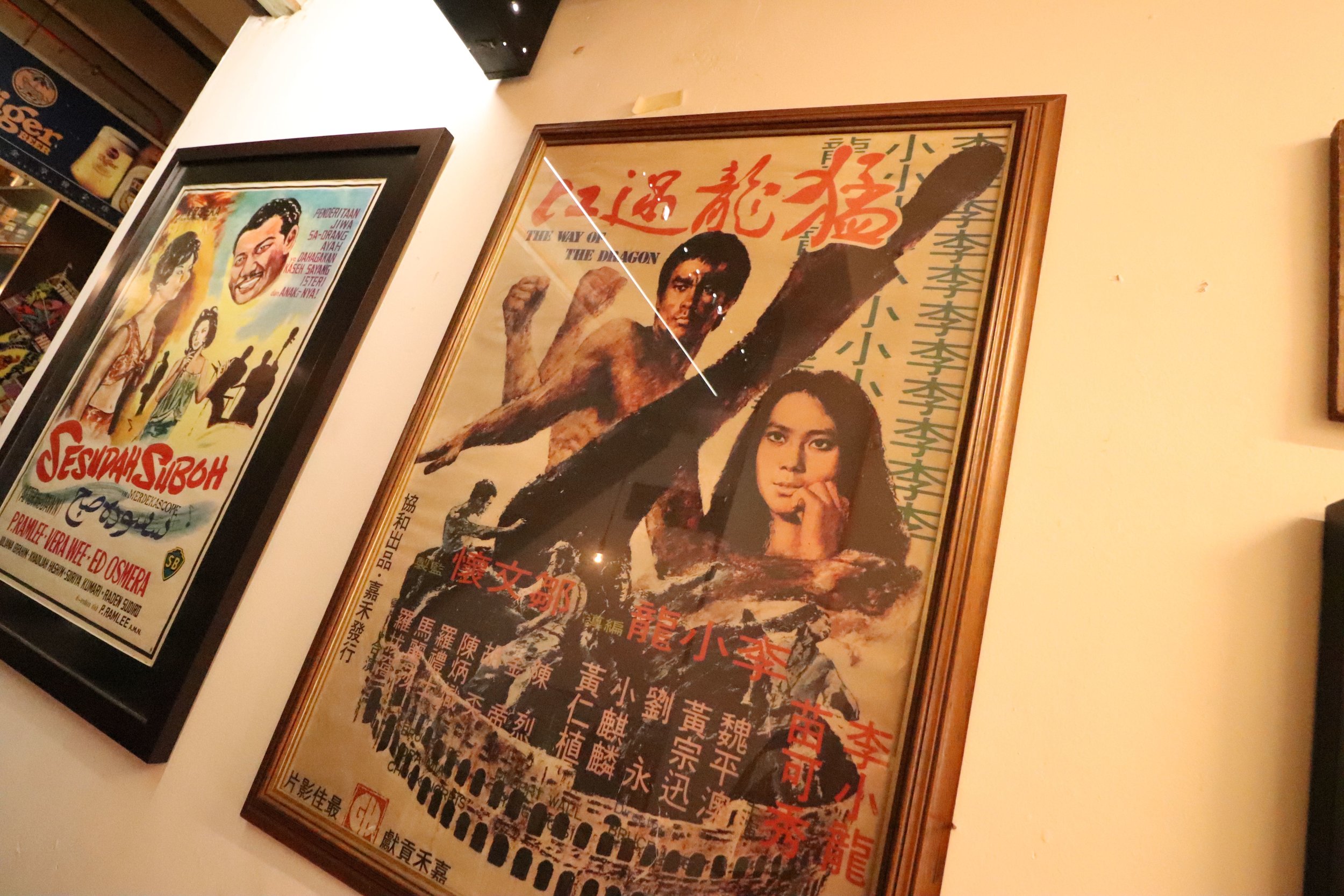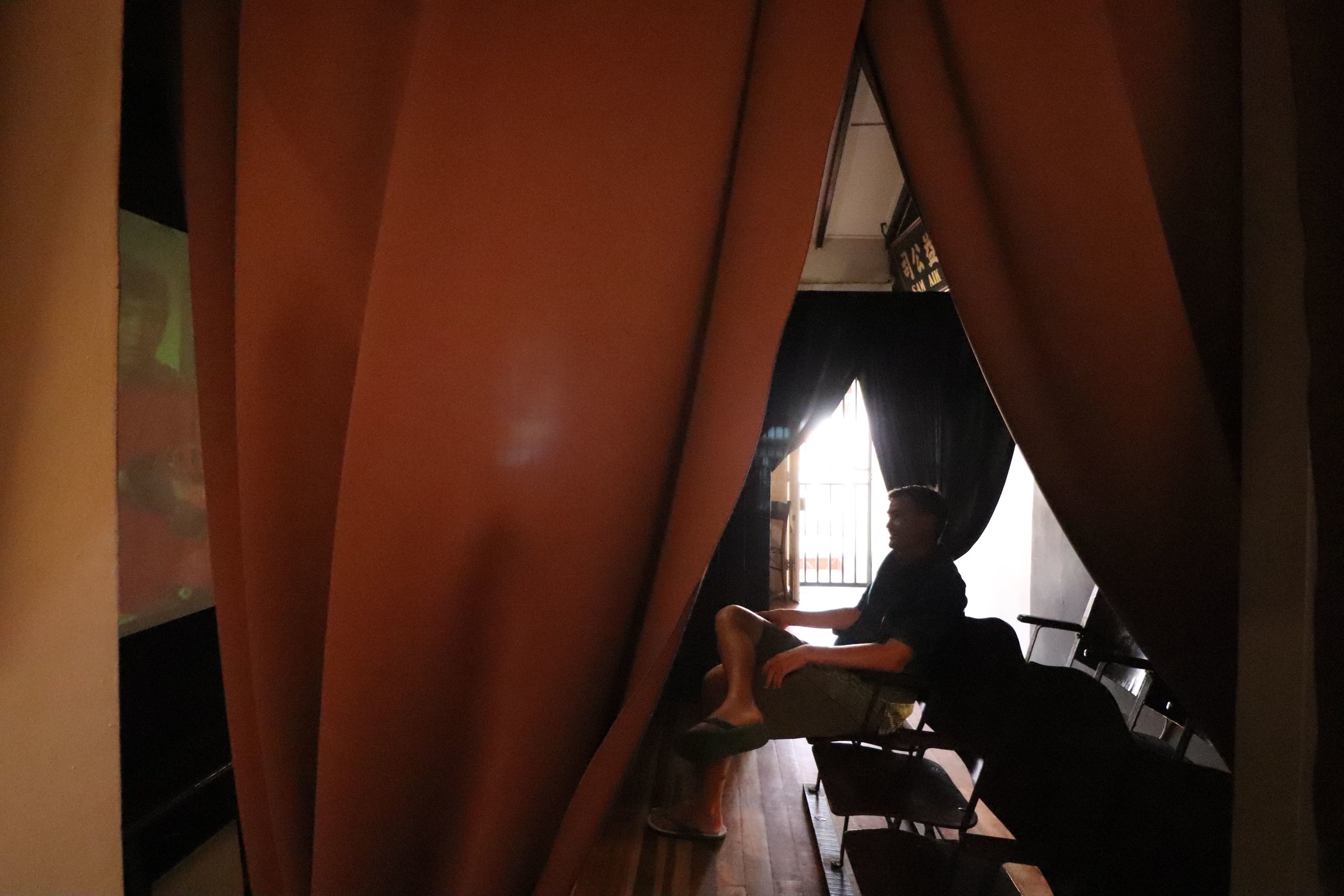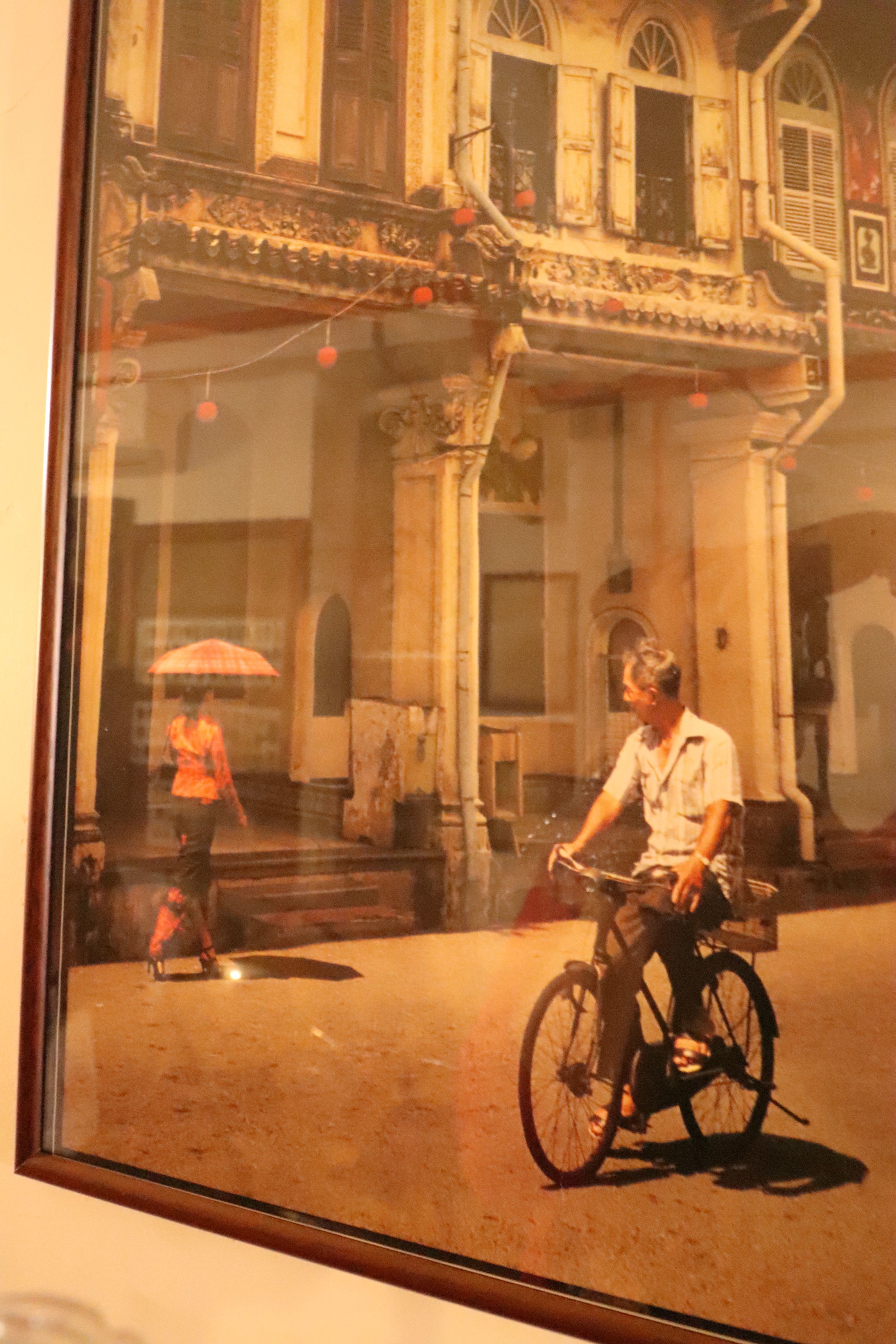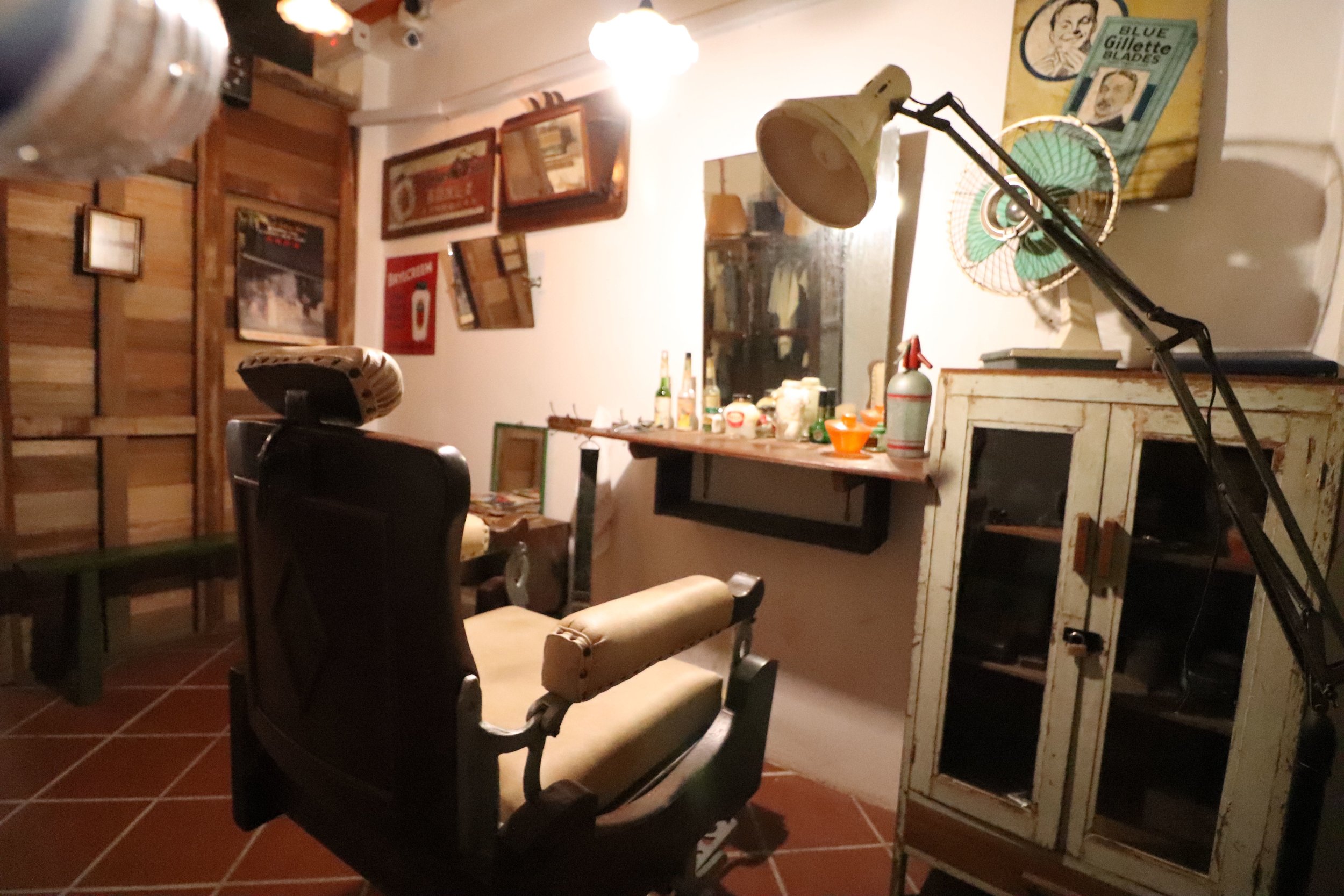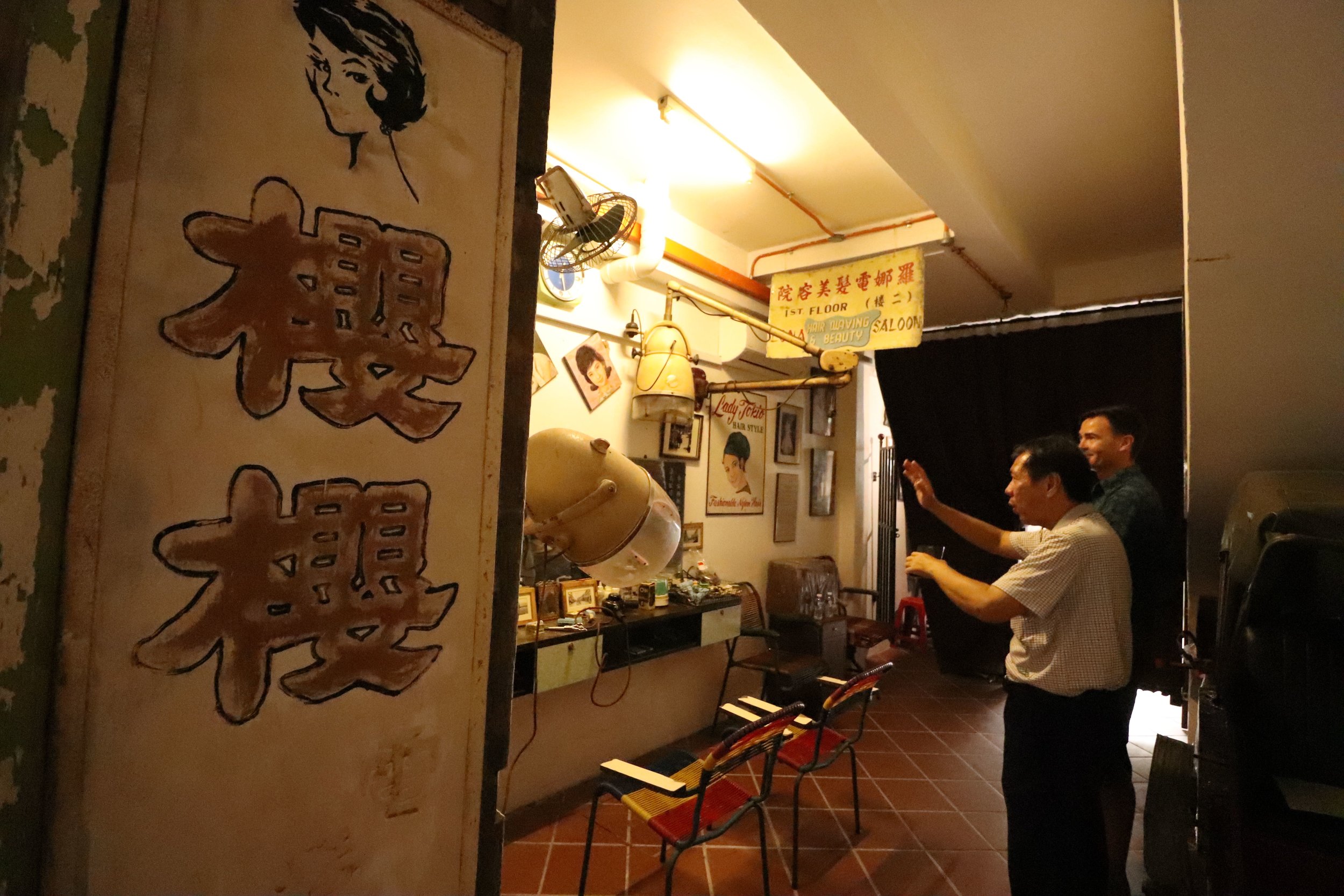South East Asia 1400 A.D., Sultan Parameswara, also known as Iskandar Shah, the last Raja of Temasek (present day Singapore) watches the bustling trading commerce of his village from his palace built of strong teak wood arranged together to stand without a single nail. Silk curtains, a gift from a Chinese trader, are open and billowing in the South East breeze. They frame his figure in the square of the window, he just finished dressing for the morning in colorful garments, hand woven with a pattern of gold thread. He touches the silk curtain; he feels powerful. As it will be said later:
“Whoever controls the Port of Melaka has their foot on the throat of Venice.”
A few years ago, the Sultan had an idea. His village is seated at the mouth of a large, deep river, and it is well protected from typhoons, monsoons, and cyclones inside the Strait between two land masses now known as Malaysia on the East and Indonesia’s Sumatra on the West. As a result the Sultan’s village of Melaka became the inevitable stopping place for large ships trying to make the transit between Europe, Arabia, India, and China. The meeting point of the East and the West. What if we made this village the best port in the world to trade materials, commodities, food, and art from East and West? The Sultan went to work to establish law to protect traders from theft, provide them with a place on land to enjoy food, drink, and the company of women (of course). He imposed a tax on goods traded through Melaka, but a tax that was fair and equally imposed upon all ships and all goods no matter where they are from.
He was right. Soon, all the Captains of the world bring ships and chests filled with treasure to trade: precious metals, teas, spices, silk and other valuable textiles, rice, fish, jewels, art, porcelain Chinese dishes (this is why you call your nice plate set “China”), and weapons.
Look! These are REAL LIFE treasure chests!!!
He creates Melaka currency. At first, it is made of tin sculpted into animals like turtles, crocodiles, and birds. Later, after the Sultan and his people embraced the religion of Islam, circular coins.
Of course, all this success came with its share of troubles. Piracy grew in the Melaka Strait; men with long black hair, pointed beards, and daggers often took no prisoners.
The port also drew notice of other powerful nations. Siam (now known as Thailand) took a swing at conquering the port, but the Sultan and his military fought them off. Shortly thereafter, in the early 1500’s the Portuguese arrived. Portugal took many of the islands in this area of the world as colonies. Upon taking possession of Melaka, the Portuguese built forts and Catholic churches of strong stone blocks they chiseled into squares. Check out the perfect condition of these bronze cannons, over 500 years later!
Many of these forts and churches stand today and give tourists like us an excellent excuse to take a ride in the Hello Kitty bicycle cart while video taping and taking selfies. (An experience not to be missed.)
The Portuguese held Malaka for about 150 years, giving discounts to their friends and creating havoc with trade manipulation against their competitors. This inspired the Dutch to take over as soon as they could, so they could shift the balance of power to themselves and pillage all the reward.
Once in control, the Dutch imported bricks and built long row houses of plaster, just like at home. I’m not sure who realized that a long row house in the tropics would be rather stuffy, but someone figured this out and they rejiggered the architecture to create an open roof in two or three parts of the house. The natural light and breeze this allowed is unparalleled in its functionality and beauty at least in the tropical format. As an added bonus, each house is built with its own water well. These row houses make unbelievable settings for museums, art galleries, shops and restaurants we visited.
The Dutch also couldn’t resist the allure of that river, so perfect to make a canal just like their own at home. While the river/canal used to be a working area where small boats shuttled valuables to/from the big ships into/out of Melaka warehouses for trade, now it is a lovely tourist walk where you can sip a Heineken and forget you are half a world away from the Netherlands.
In the early 1800s, the Dutch found themselves fighting a war against the French, taking much of their resources and man power. The British allied themselves with the Dutch, and the Dutch asked the British to temporarily take over and protect the Dutch port of Melaka. The British were all too happy to be entrusted with this task, and while the Dutch were duly distracted, the British systematically began destroying the Dutch defense systems for their Melaka port. By the time the British returned the port to the Dutch, the place was in ruins and the Dutch lost interest. The British bought the port for pennies on the dollar - or should I say a shilling on the pound! The British contributed a minimal amount of architecture to the mix, building their version of a church. Beyond this, the Brits mostly squandered the strength of this port, allowing it to be silted with mud and fall into disuse while they focused on ports in Singapore to the South.
In addition to the colonizers, Melaka felt the influence of workers and traders who came to live and work in the bustling port. As Chinese Traders came to Melaka, they continued to build significant wealth and influence. Even Japan had a stint of control during World War II.
But In 1946, Malaysia as a whole gained its independence, Melaka included.
Now, Melaka is listed as a UNESCO World Heritage City worth preserving for the sake of its history. Luckily the Malaysians have a fun attitude toward curation of museums. Each Museum isn’t only a display but an experience of existing in the time and place being curated. The Malay Sultan’s history is housed in a replica of his teak palace, the maritime history is housed in a giant replica of a sailing ship. The history of the Chinese-Malay or Perkernan people is displayed in the home of Mr. Baba Nyonya in which the family’s furniture, dishes, clothing, and lifestyle remains on display.
Indeed, you never know when you may be stopped by a highly enthusiastic museum curator with an offer to “cool off in the shade”. Before you know it, “Mr. T” will be closing up his doors and ushering you through a tour of a museum holding “Life in Melaka 1950’s-70’s era.” Explore a middle class Chinese Household! A Pharmacy! A Theater! The Dentist Office! A Beauty Salon! and more.
No doubt, it’s all worth preserving. Melaka isn’t just a place of history for Malaysia; it is the meeting point of the entire world. It is the point where the cultures of East and West mixed and shared their material trades, arts, and technology. I look at Melaka as a Grand Experiment in human exchange: first, in the context of free market trade challenged by the lawlessness of piracy, later, through war and colonialism. No doubt, there is much we could learn by studying the full picture of 500 years worth of commerce in this one small port.
To be continued…

